Quick filters:
Urartian Stock Photos and Images
 Bell inscribed with the Urartian royal name Argishti MET DT953 Stock Photohttps://www.alamy.com/image-license-details/?v=1https://www.alamy.com/stock-photo-bell-inscribed-with-the-urartian-royal-name-argishti-met-dt953-170084845.html
Bell inscribed with the Urartian royal name Argishti MET DT953 Stock Photohttps://www.alamy.com/image-license-details/?v=1https://www.alamy.com/stock-photo-bell-inscribed-with-the-urartian-royal-name-argishti-met-dt953-170084845.htmlRMKTM0XN–Bell inscribed with the Urartian royal name Argishti MET DT953
 Reproduction of stone image of urartian god Teisheba on the bull Stock Photohttps://www.alamy.com/image-license-details/?v=1https://www.alamy.com/stock-photo-reproduction-of-stone-image-of-urartian-god-teisheba-on-the-bull-137861102.html
Reproduction of stone image of urartian god Teisheba on the bull Stock Photohttps://www.alamy.com/image-license-details/?v=1https://www.alamy.com/stock-photo-reproduction-of-stone-image-of-urartian-god-teisheba-on-the-bull-137861102.htmlRMJ0836P–Reproduction of stone image of urartian god Teisheba on the bull
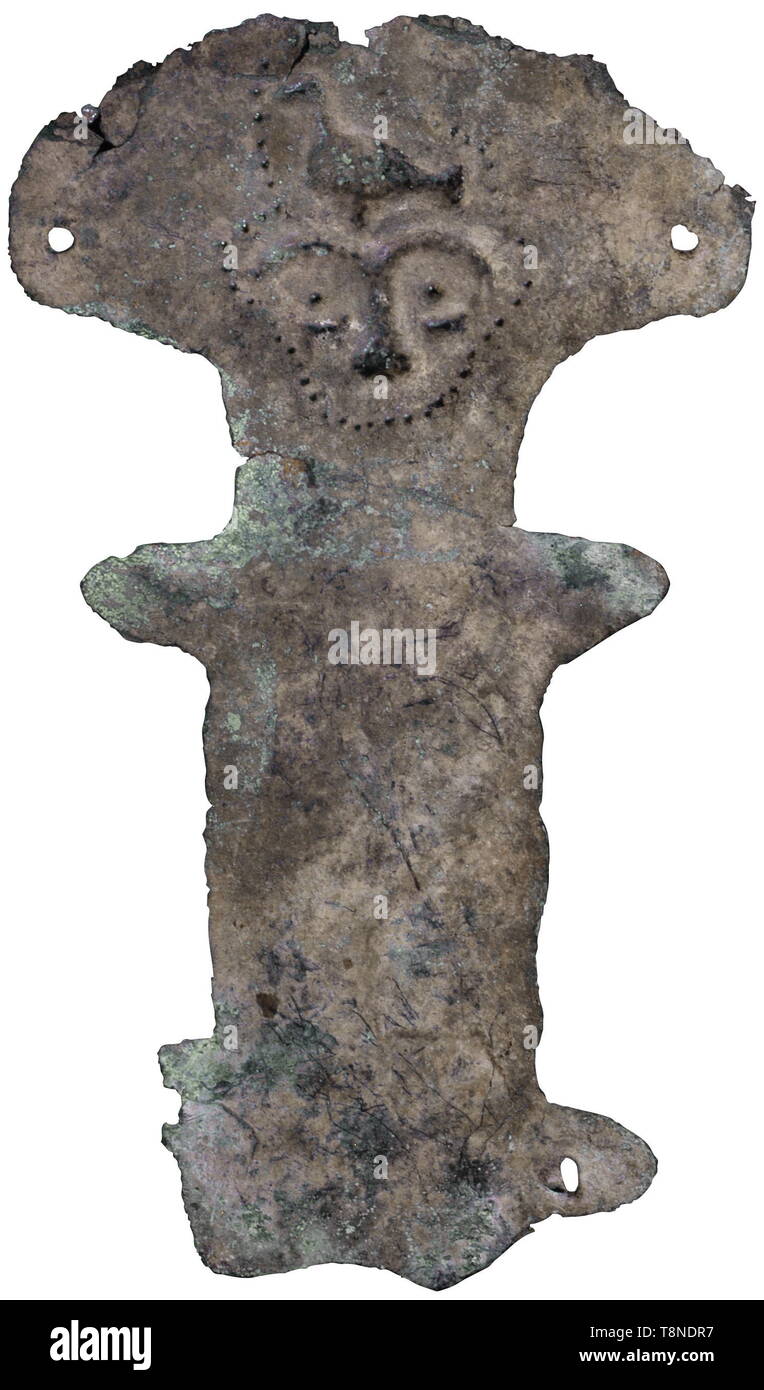 A Urartian bronze idol, 7th century BC Of flattened sheet with schematic design, the face outlined by a dotted row, the eyebrows, eyes and nose in slightly raised relief, a bird on the forehead. EX D. K. collection, Berlin, acquired in 1985. Height 15.3 cm. Cf. G. Zahlhaas, Idols. Early Images of God and Offering, Munich, exhibition, 1985, p. 53 no. 16. Provenance: Gorney & Mosch, Munich, 22 June 2007, no. 569. USA-lot, see page 5. historic, historical, ancient world, Additional-Rights-Clearance-Info-Not-Available Stock Photohttps://www.alamy.com/image-license-details/?v=1https://www.alamy.com/a-urartian-bronze-idol-7th-century-bc-of-flattened-sheet-with-schematic-design-the-face-outlined-by-a-dotted-row-the-eyebrows-eyes-and-nose-in-slightly-raised-relief-a-bird-on-the-forehead-ex-d-k-collection-berlin-acquired-in-1985-height-153-cm-cf-g-zahlhaas-idols-early-images-of-god-and-offering-munich-exhibition-1985-p-53-no-16-provenance-gorney-mosch-munich-22-june-2007-no-569-usa-lot-see-page-5-historic-historical-ancient-world-additional-rights-clearance-info-not-available-image246334235.html
A Urartian bronze idol, 7th century BC Of flattened sheet with schematic design, the face outlined by a dotted row, the eyebrows, eyes and nose in slightly raised relief, a bird on the forehead. EX D. K. collection, Berlin, acquired in 1985. Height 15.3 cm. Cf. G. Zahlhaas, Idols. Early Images of God and Offering, Munich, exhibition, 1985, p. 53 no. 16. Provenance: Gorney & Mosch, Munich, 22 June 2007, no. 569. USA-lot, see page 5. historic, historical, ancient world, Additional-Rights-Clearance-Info-Not-Available Stock Photohttps://www.alamy.com/image-license-details/?v=1https://www.alamy.com/a-urartian-bronze-idol-7th-century-bc-of-flattened-sheet-with-schematic-design-the-face-outlined-by-a-dotted-row-the-eyebrows-eyes-and-nose-in-slightly-raised-relief-a-bird-on-the-forehead-ex-d-k-collection-berlin-acquired-in-1985-height-153-cm-cf-g-zahlhaas-idols-early-images-of-god-and-offering-munich-exhibition-1985-p-53-no-16-provenance-gorney-mosch-munich-22-june-2007-no-569-usa-lot-see-page-5-historic-historical-ancient-world-additional-rights-clearance-info-not-available-image246334235.htmlRMT8NDR7–A Urartian bronze idol, 7th century BC Of flattened sheet with schematic design, the face outlined by a dotted row, the eyebrows, eyes and nose in slightly raised relief, a bird on the forehead. EX D. K. collection, Berlin, acquired in 1985. Height 15.3 cm. Cf. G. Zahlhaas, Idols. Early Images of God and Offering, Munich, exhibition, 1985, p. 53 no. 16. Provenance: Gorney & Mosch, Munich, 22 June 2007, no. 569. USA-lot, see page 5. historic, historical, ancient world, Additional-Rights-Clearance-Info-Not-Available
 Relief depicting lions on a bronze shield of the Urartian king Sarduri II. Photography from the mid-20th century. Stock Photohttps://www.alamy.com/image-license-details/?v=1https://www.alamy.com/relief-depicting-lions-on-a-bronze-shield-of-the-urartian-king-sarduri-ii-photography-from-the-mid-20th-century-image604647471.html
Relief depicting lions on a bronze shield of the Urartian king Sarduri II. Photography from the mid-20th century. Stock Photohttps://www.alamy.com/image-license-details/?v=1https://www.alamy.com/relief-depicting-lions-on-a-bronze-shield-of-the-urartian-king-sarduri-ii-photography-from-the-mid-20th-century-image604647471.htmlRM2X3M20F–Relief depicting lions on a bronze shield of the Urartian king Sarduri II. Photography from the mid-20th century.
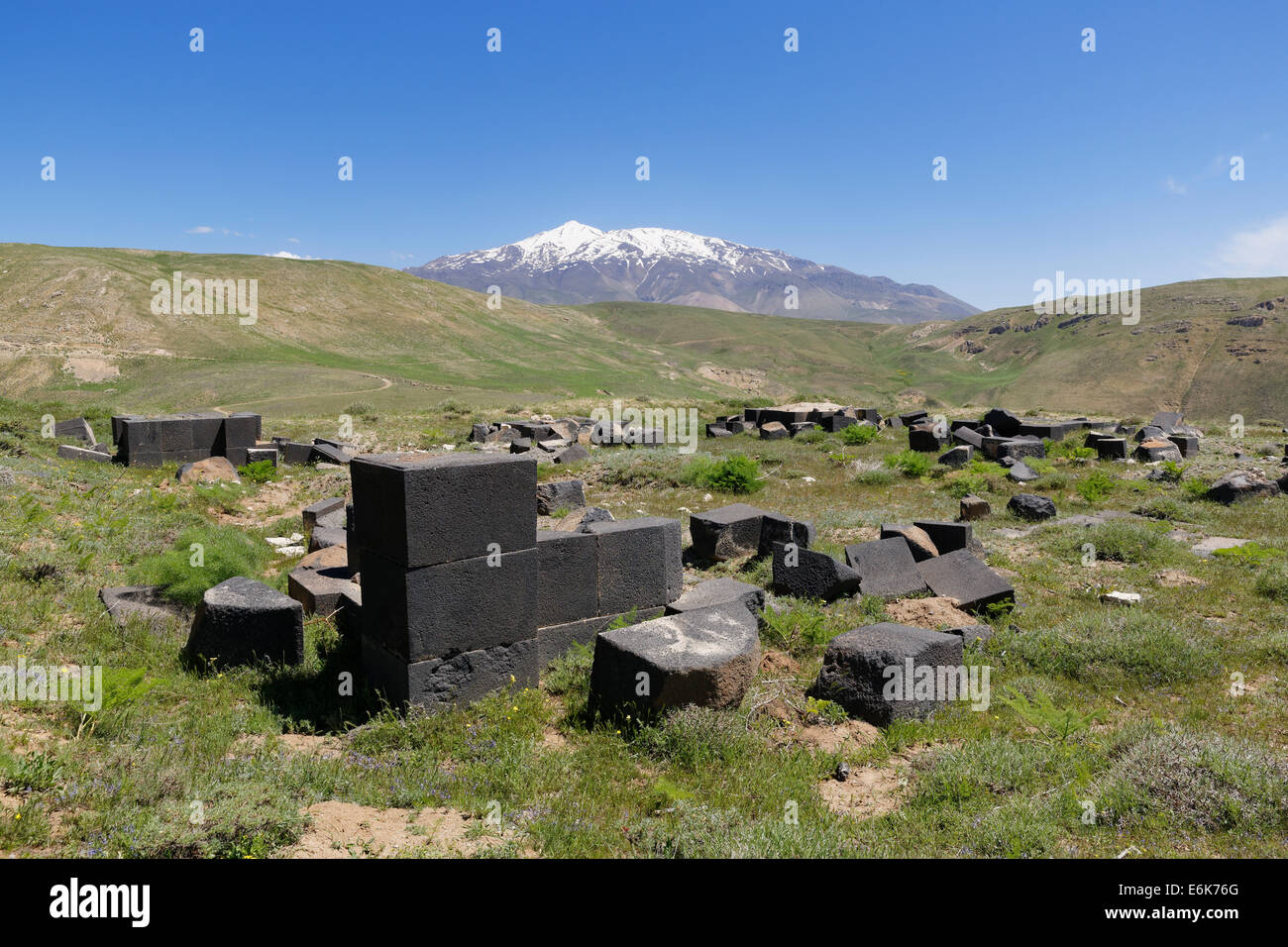 Ruins of the Urartian palace fortress of Kef Kalesi or Kefkalesi, volcano Mount Süphan or Süphan Dagi at the back, Adilcevaz Stock Photohttps://www.alamy.com/image-license-details/?v=1https://www.alamy.com/stock-photo-ruins-of-the-urartian-palace-fortress-of-kef-kalesi-or-kefkalesi-volcano-72952168.html
Ruins of the Urartian palace fortress of Kef Kalesi or Kefkalesi, volcano Mount Süphan or Süphan Dagi at the back, Adilcevaz Stock Photohttps://www.alamy.com/image-license-details/?v=1https://www.alamy.com/stock-photo-ruins-of-the-urartian-palace-fortress-of-kef-kalesi-or-kefkalesi-volcano-72952168.htmlRFE6K76G–Ruins of the Urartian palace fortress of Kef Kalesi or Kefkalesi, volcano Mount Süphan or Süphan Dagi at the back, Adilcevaz
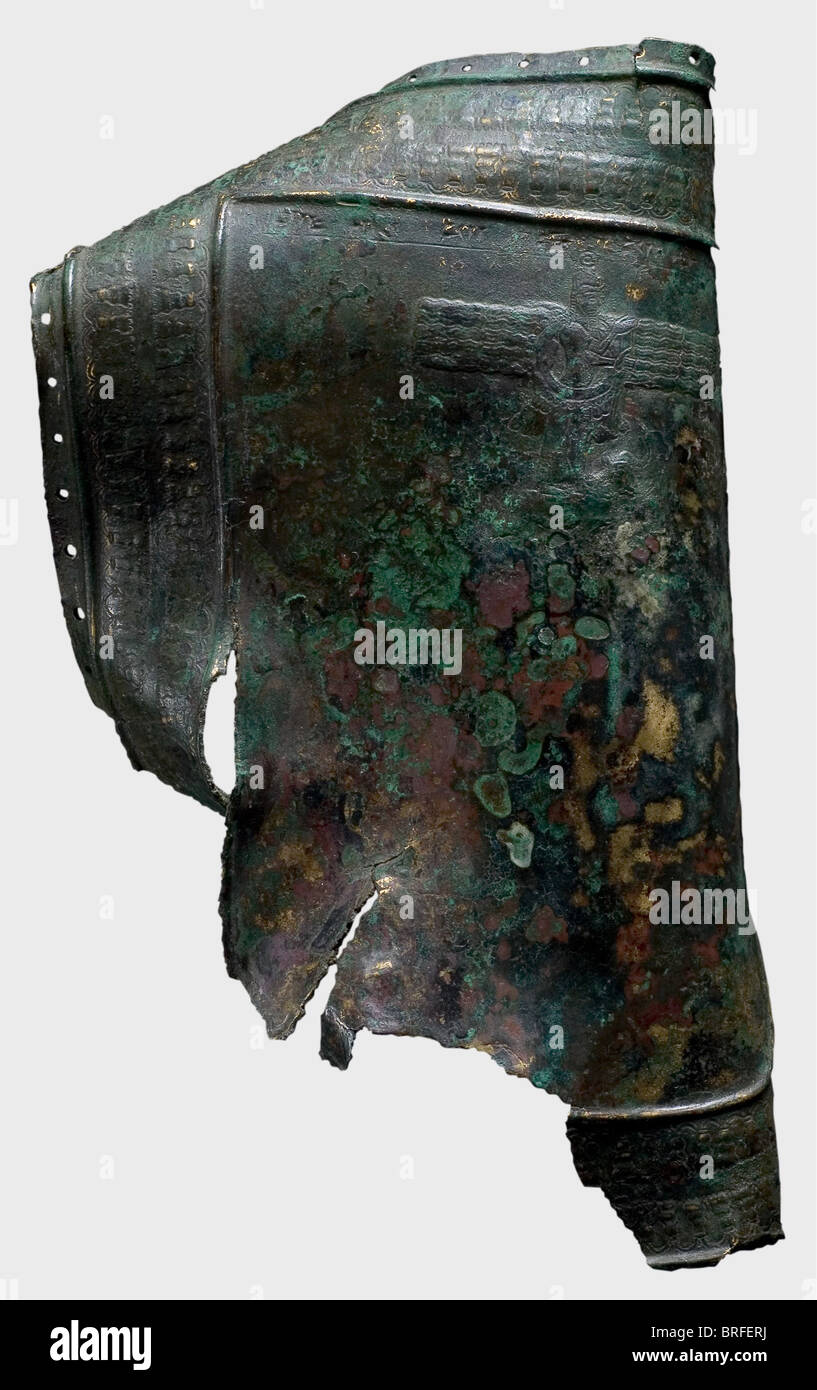 An Urartian pectoral with inscription, 830 - 810 B.C. Bronze, the lower part of an originally two-piece Urartian peytral, which were loosely connected by rings. Heavy, trapezoidal horse tack, intentionally deformed after heating, and edged with embossed and chiselled double borders of decorative bows with hanging tassels or tails. Displayed in the centre of the upper field is a bearded deity (unidentified, Haldi?, Teisheba?, Shivini?) with a horned crown standing on an bull in the winged disk, above one line of cuneiform script, 'Property of historic, historica, Stock Photohttps://www.alamy.com/image-license-details/?v=1https://www.alamy.com/stock-photo-an-urartian-pectoral-with-inscription-830-810-bc-bronze-the-lower-31688374.html
An Urartian pectoral with inscription, 830 - 810 B.C. Bronze, the lower part of an originally two-piece Urartian peytral, which were loosely connected by rings. Heavy, trapezoidal horse tack, intentionally deformed after heating, and edged with embossed and chiselled double borders of decorative bows with hanging tassels or tails. Displayed in the centre of the upper field is a bearded deity (unidentified, Haldi?, Teisheba?, Shivini?) with a horned crown standing on an bull in the winged disk, above one line of cuneiform script, 'Property of historic, historica, Stock Photohttps://www.alamy.com/image-license-details/?v=1https://www.alamy.com/stock-photo-an-urartian-pectoral-with-inscription-830-810-bc-bronze-the-lower-31688374.htmlRMBRFERJ–An Urartian pectoral with inscription, 830 - 810 B.C. Bronze, the lower part of an originally two-piece Urartian peytral, which were loosely connected by rings. Heavy, trapezoidal horse tack, intentionally deformed after heating, and edged with embossed and chiselled double borders of decorative bows with hanging tassels or tails. Displayed in the centre of the upper field is a bearded deity (unidentified, Haldi?, Teisheba?, Shivini?) with a horned crown standing on an bull in the winged disk, above one line of cuneiform script, 'Property of historic, historica,
 Turkey East Anatolia Cavustepe Urartian fortress Sardurihinili Stock Photohttps://www.alamy.com/image-license-details/?v=1https://www.alamy.com/stock-photo-turkey-east-anatolia-cavustepe-urartian-fortress-sardurihinili-75248171.html
Turkey East Anatolia Cavustepe Urartian fortress Sardurihinili Stock Photohttps://www.alamy.com/image-license-details/?v=1https://www.alamy.com/stock-photo-turkey-east-anatolia-cavustepe-urartian-fortress-sardurihinili-75248171.htmlRMEABRPK–Turkey East Anatolia Cavustepe Urartian fortress Sardurihinili
 Cavustepe's fortress city, Sardurihinli, ruins of 7th century BC Urartian settlement Stock Photohttps://www.alamy.com/image-license-details/?v=1https://www.alamy.com/stock-photo-cavustepes-fortress-city-sardurihinli-ruins-of-7th-century-bc-urartian-21261225.html
Cavustepe's fortress city, Sardurihinli, ruins of 7th century BC Urartian settlement Stock Photohttps://www.alamy.com/image-license-details/?v=1https://www.alamy.com/stock-photo-cavustepes-fortress-city-sardurihinli-ruins-of-7th-century-bc-urartian-21261225.htmlRMB6GEWD–Cavustepe's fortress city, Sardurihinli, ruins of 7th century BC Urartian settlement
 Bell inscribed with the Urartian royal name Argishti, ca. 789–766 B.C Stock Photohttps://www.alamy.com/image-license-details/?v=1https://www.alamy.com/stock-image-bell-inscribed-with-the-urartian-royal-name-argishti-ca-789766-bc-162537187.html
Bell inscribed with the Urartian royal name Argishti, ca. 789–766 B.C Stock Photohttps://www.alamy.com/image-license-details/?v=1https://www.alamy.com/stock-image-bell-inscribed-with-the-urartian-royal-name-argishti-ca-789766-bc-162537187.htmlRMKCC5RF–Bell inscribed with the Urartian royal name Argishti, ca. 789–766 B.C
 Urartian cuneiform inscriptions in the remains of the old town of Van, known as Tushba, in Eastern Turkey Stock Photohttps://www.alamy.com/image-license-details/?v=1https://www.alamy.com/urartian-cuneiform-inscriptions-in-the-remains-of-the-old-town-of-van-known-as-tushba-in-eastern-turkey-image354674234.html
Urartian cuneiform inscriptions in the remains of the old town of Van, known as Tushba, in Eastern Turkey Stock Photohttps://www.alamy.com/image-license-details/?v=1https://www.alamy.com/urartian-cuneiform-inscriptions-in-the-remains-of-the-old-town-of-van-known-as-tushba-in-eastern-turkey-image354674234.htmlRF2BH0PGX–Urartian cuneiform inscriptions in the remains of the old town of Van, known as Tushba, in Eastern Turkey
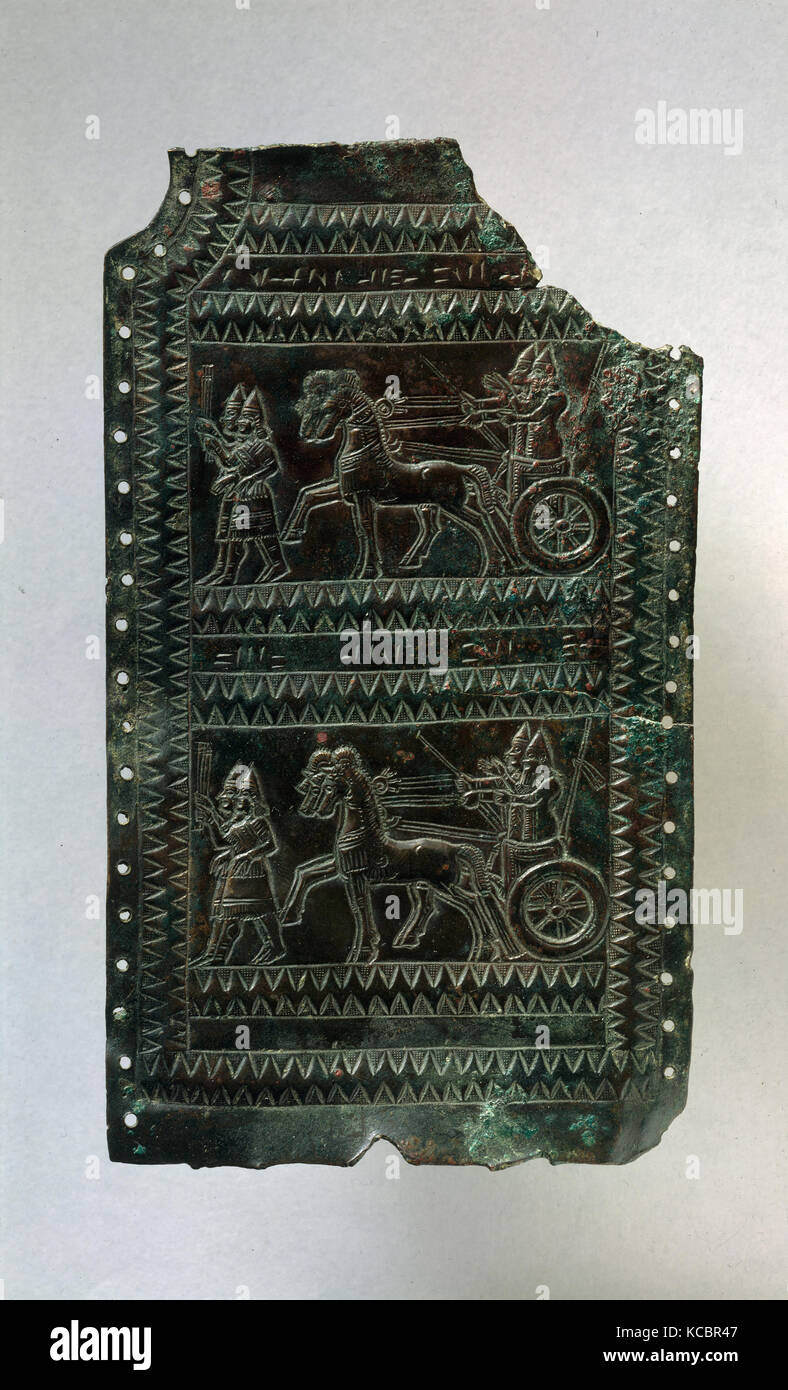 Plaque fragment with chariot scenes inscribed with the Urartian royal name Argishti, ca. 713–679 B.C Stock Photohttps://www.alamy.com/image-license-details/?v=1https://www.alamy.com/stock-image-plaque-fragment-with-chariot-scenes-inscribed-with-the-urartian-royal-162528807.html
Plaque fragment with chariot scenes inscribed with the Urartian royal name Argishti, ca. 713–679 B.C Stock Photohttps://www.alamy.com/image-license-details/?v=1https://www.alamy.com/stock-image-plaque-fragment-with-chariot-scenes-inscribed-with-the-urartian-royal-162528807.htmlRMKCBR47–Plaque fragment with chariot scenes inscribed with the Urartian royal name Argishti, ca. 713–679 B.C
 Carved Stone Horse, with Carved Saddle, Stirrups and Harness, an Urartian Funerary Sculpture from the Iron Age Urarta Civilization (c8th-c6thBC), around Van Turkey Stock Photohttps://www.alamy.com/image-license-details/?v=1https://www.alamy.com/stock-photo-carved-stone-horse-with-carved-saddle-stirrups-and-harness-an-urartian-131607842.html
Carved Stone Horse, with Carved Saddle, Stirrups and Harness, an Urartian Funerary Sculpture from the Iron Age Urarta Civilization (c8th-c6thBC), around Van Turkey Stock Photohttps://www.alamy.com/image-license-details/?v=1https://www.alamy.com/stock-photo-carved-stone-horse-with-carved-saddle-stirrups-and-harness-an-urartian-131607842.htmlRMHJ3742–Carved Stone Horse, with Carved Saddle, Stirrups and Harness, an Urartian Funerary Sculpture from the Iron Age Urarta Civilization (c8th-c6thBC), around Van Turkey
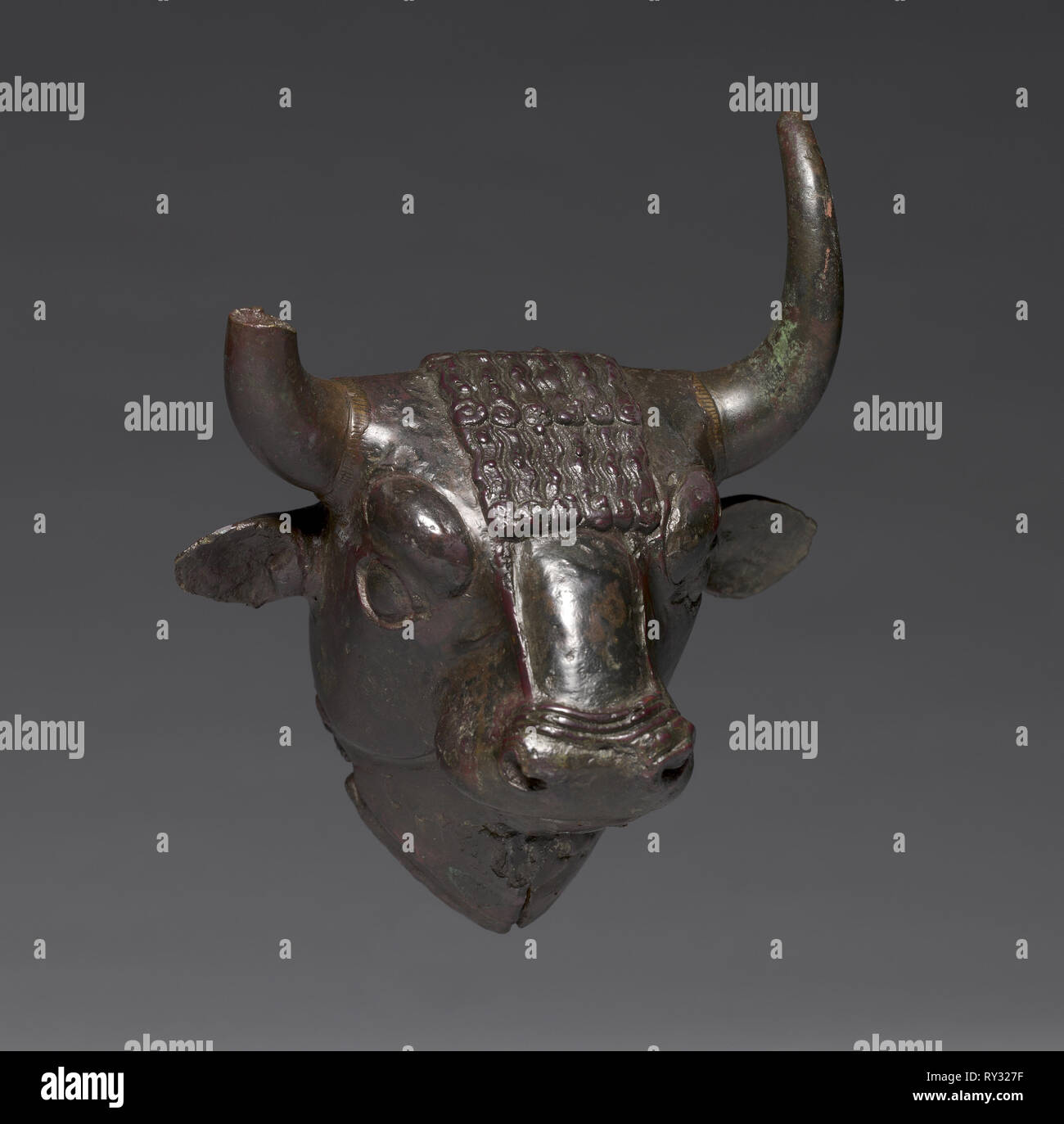 Bull Head Attachment, c. 700-600 BC. Urartian, northwest Iran, possibly Gusçi, Lake Urmia, c. 700-600 BC. Bronze; overall: 16.6 cm (6 9/16 in Stock Photohttps://www.alamy.com/image-license-details/?v=1https://www.alamy.com/bull-head-attachment-c-700-600-bc-urartian-northwest-iran-possibly-gusi-lake-urmia-c-700-600-bc-bronze-overall-166-cm-6-916-in-image240398131.html
Bull Head Attachment, c. 700-600 BC. Urartian, northwest Iran, possibly Gusçi, Lake Urmia, c. 700-600 BC. Bronze; overall: 16.6 cm (6 9/16 in Stock Photohttps://www.alamy.com/image-license-details/?v=1https://www.alamy.com/bull-head-attachment-c-700-600-bc-urartian-northwest-iran-possibly-gusi-lake-urmia-c-700-600-bc-bronze-overall-166-cm-6-916-in-image240398131.htmlRMRY327F–Bull Head Attachment, c. 700-600 BC. Urartian, northwest Iran, possibly Gusçi, Lake Urmia, c. 700-600 BC. Bronze; overall: 16.6 cm (6 9/16 in
 Art inspired by Pin terminating in three eagles' heads, Iron Age III, ca. 7th century B.C., Urartu, Urartian, Silver, 3.19 in. (8.1 cm), Metalwork-Ornaments, Classic works modernized by Artotop with a splash of modernity. Shapes, color and value, eye-catching visual impact on art. Emotions through freedom of artworks in a contemporary way. A timeless message pursuing a wildly creative new direction. Artists turning to the digital medium and creating the Artotop NFT Stock Photohttps://www.alamy.com/image-license-details/?v=1https://www.alamy.com/art-inspired-by-pin-terminating-in-three-eagles-heads-iron-age-iii-ca-7th-century-bc-urartu-urartian-silver-319-in-81-cm-metalwork-ornaments-classic-works-modernized-by-artotop-with-a-splash-of-modernity-shapes-color-and-value-eye-catching-visual-impact-on-art-emotions-through-freedom-of-artworks-in-a-contemporary-way-a-timeless-message-pursuing-a-wildly-creative-new-direction-artists-turning-to-the-digital-medium-and-creating-the-artotop-nft-image462945098.html
Art inspired by Pin terminating in three eagles' heads, Iron Age III, ca. 7th century B.C., Urartu, Urartian, Silver, 3.19 in. (8.1 cm), Metalwork-Ornaments, Classic works modernized by Artotop with a splash of modernity. Shapes, color and value, eye-catching visual impact on art. Emotions through freedom of artworks in a contemporary way. A timeless message pursuing a wildly creative new direction. Artists turning to the digital medium and creating the Artotop NFT Stock Photohttps://www.alamy.com/image-license-details/?v=1https://www.alamy.com/art-inspired-by-pin-terminating-in-three-eagles-heads-iron-age-iii-ca-7th-century-bc-urartu-urartian-silver-319-in-81-cm-metalwork-ornaments-classic-works-modernized-by-artotop-with-a-splash-of-modernity-shapes-color-and-value-eye-catching-visual-impact-on-art-emotions-through-freedom-of-artworks-in-a-contemporary-way-a-timeless-message-pursuing-a-wildly-creative-new-direction-artists-turning-to-the-digital-medium-and-creating-the-artotop-nft-image462945098.htmlRF2HW4Y5E–Art inspired by Pin terminating in three eagles' heads, Iron Age III, ca. 7th century B.C., Urartu, Urartian, Silver, 3.19 in. (8.1 cm), Metalwork-Ornaments, Classic works modernized by Artotop with a splash of modernity. Shapes, color and value, eye-catching visual impact on art. Emotions through freedom of artworks in a contemporary way. A timeless message pursuing a wildly creative new direction. Artists turning to the digital medium and creating the Artotop NFT
 Stamp-cylinder seal (with loop handle) with monsters, Urartian, Iron Age II, Date ca. 8th–7th century B.C., Urartu, Urartian, Chrysotite, 0.96 in. (2.44 cm), Stone-Stamp Seals Stock Photohttps://www.alamy.com/image-license-details/?v=1https://www.alamy.com/stamp-cylinder-seal-with-loop-handle-with-monsters-urartian-iron-age-ii-date-ca-8th7th-century-bc-urartu-urartian-chrysotite-096-in-244-cm-stone-stamp-seals-image344673933.html
Stamp-cylinder seal (with loop handle) with monsters, Urartian, Iron Age II, Date ca. 8th–7th century B.C., Urartu, Urartian, Chrysotite, 0.96 in. (2.44 cm), Stone-Stamp Seals Stock Photohttps://www.alamy.com/image-license-details/?v=1https://www.alamy.com/stamp-cylinder-seal-with-loop-handle-with-monsters-urartian-iron-age-ii-date-ca-8th7th-century-bc-urartu-urartian-chrysotite-096-in-244-cm-stone-stamp-seals-image344673933.htmlRM2B0N739–Stamp-cylinder seal (with loop handle) with monsters, Urartian, Iron Age II, Date ca. 8th–7th century B.C., Urartu, Urartian, Chrysotite, 0.96 in. (2.44 cm), Stone-Stamp Seals
 Urartian cuneiform on Van Kale, Turkey 100926 37274 Stock Photohttps://www.alamy.com/image-license-details/?v=1https://www.alamy.com/stock-photo-urartian-cuneiform-on-van-kale-turkey-100926-37274-34024062.html
Urartian cuneiform on Van Kale, Turkey 100926 37274 Stock Photohttps://www.alamy.com/image-license-details/?v=1https://www.alamy.com/stock-photo-urartian-cuneiform-on-van-kale-turkey-100926-37274-34024062.htmlRMBY9X12–Urartian cuneiform on Van Kale, Turkey 100926 37274
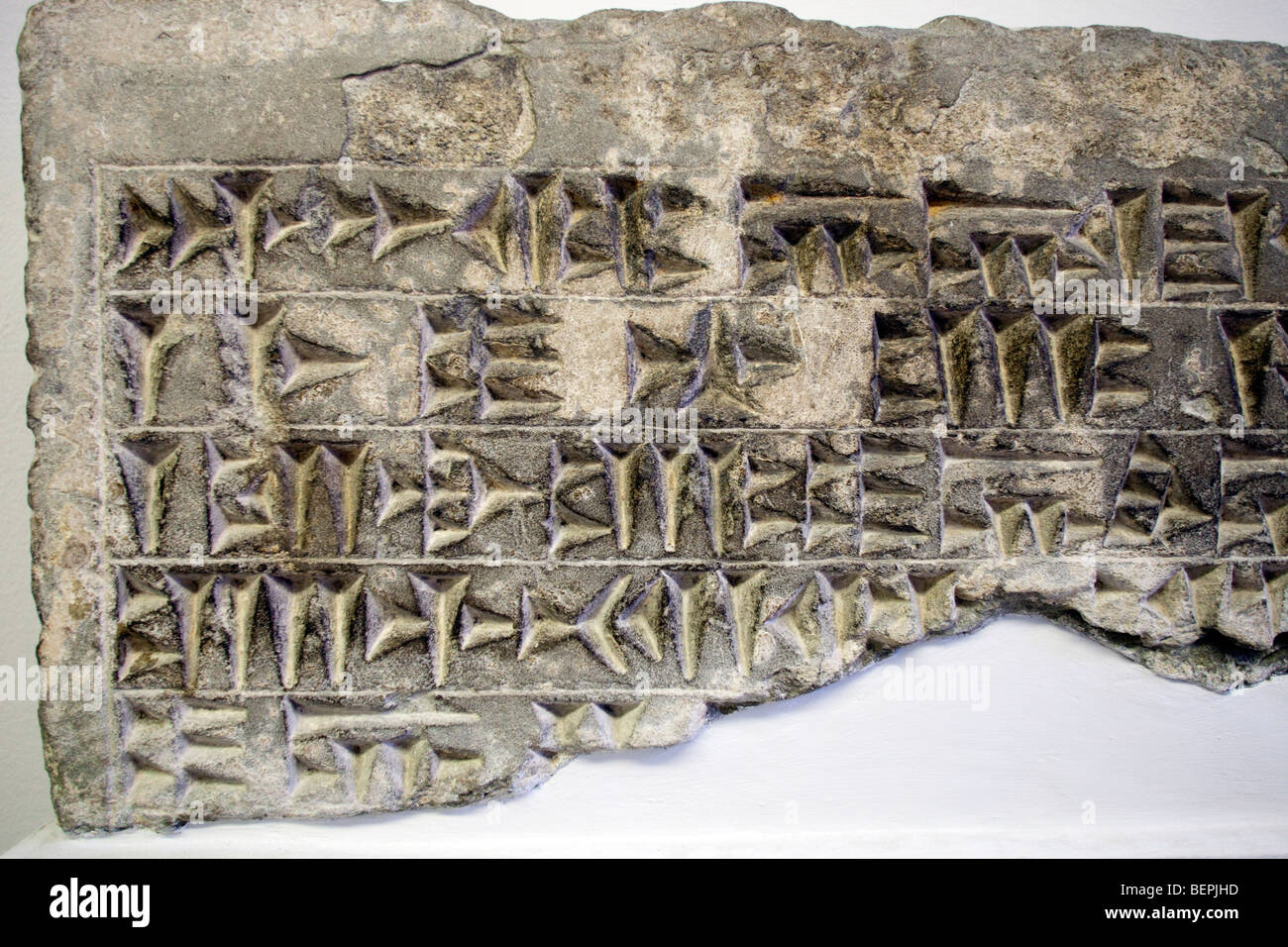 Urartian king Menua (9th-8th century BC) cuneiform inscription, Pergamon Museum, Berlin, Germany Stock Photohttps://www.alamy.com/image-license-details/?v=1https://www.alamy.com/stock-photo-urartian-king-menua-9th-8th-century-bc-cuneiform-inscription-pergamon-26313097.html
Urartian king Menua (9th-8th century BC) cuneiform inscription, Pergamon Museum, Berlin, Germany Stock Photohttps://www.alamy.com/image-license-details/?v=1https://www.alamy.com/stock-photo-urartian-king-menua-9th-8th-century-bc-cuneiform-inscription-pergamon-26313097.htmlRMBEPJHD–Urartian king Menua (9th-8th century BC) cuneiform inscription, Pergamon Museum, Berlin, Germany
 Ruins of the Urartian citadel of Cavustepe, Van, Turkey Stock Photohttps://www.alamy.com/image-license-details/?v=1https://www.alamy.com/ruins-of-the-urartian-citadel-of-cavustepe-van-turkey-image605214804.html
Ruins of the Urartian citadel of Cavustepe, Van, Turkey Stock Photohttps://www.alamy.com/image-license-details/?v=1https://www.alamy.com/ruins-of-the-urartian-citadel-of-cavustepe-van-turkey-image605214804.htmlRF2X4HWJC–Ruins of the Urartian citadel of Cavustepe, Van, Turkey
 Walls of the ancient Urartian fortress of Old Beyazit in sunset light, near Dogubayazit, Turkey Stock Photohttps://www.alamy.com/image-license-details/?v=1https://www.alamy.com/stock-photo-walls-of-the-ancient-urartian-fortress-of-old-beyazit-in-sunset-light-105240165.html
Walls of the ancient Urartian fortress of Old Beyazit in sunset light, near Dogubayazit, Turkey Stock Photohttps://www.alamy.com/image-license-details/?v=1https://www.alamy.com/stock-photo-walls-of-the-ancient-urartian-fortress-of-old-beyazit-in-sunset-light-105240165.htmlRMG362W9–Walls of the ancient Urartian fortress of Old Beyazit in sunset light, near Dogubayazit, Turkey
 Ruins of the Urartian citadel of Cavustepe, Van, Turkey Stock Photohttps://www.alamy.com/image-license-details/?v=1https://www.alamy.com/ruins-of-the-urartian-citadel-of-cavustepe-van-turkey-image605002881.html
Ruins of the Urartian citadel of Cavustepe, Van, Turkey Stock Photohttps://www.alamy.com/image-license-details/?v=1https://www.alamy.com/ruins-of-the-urartian-citadel-of-cavustepe-van-turkey-image605002881.htmlRF2X4879N–Ruins of the Urartian citadel of Cavustepe, Van, Turkey
 Urartian Castle and Beyazit Mosque in Dogubeyazit district of Agri city in eastern Turkey Stock Photohttps://www.alamy.com/image-license-details/?v=1https://www.alamy.com/urartian-castle-and-beyazit-mosque-in-dogubeyazit-district-of-agri-city-in-eastern-turkey-image449886596.html
Urartian Castle and Beyazit Mosque in Dogubeyazit district of Agri city in eastern Turkey Stock Photohttps://www.alamy.com/image-license-details/?v=1https://www.alamy.com/urartian-castle-and-beyazit-mosque-in-dogubeyazit-district-of-agri-city-in-eastern-turkey-image449886596.htmlRF2H3X2XC–Urartian Castle and Beyazit Mosque in Dogubeyazit district of Agri city in eastern Turkey
 Reflections of the Castle of Van in Turkey. Stock Photohttps://www.alamy.com/image-license-details/?v=1https://www.alamy.com/stock-photo-reflections-of-the-castle-of-van-in-turkey-175609797.html
Reflections of the Castle of Van in Turkey. Stock Photohttps://www.alamy.com/image-license-details/?v=1https://www.alamy.com/stock-photo-reflections-of-the-castle-of-van-in-turkey-175609797.htmlRFM5KM2D–Reflections of the Castle of Van in Turkey.
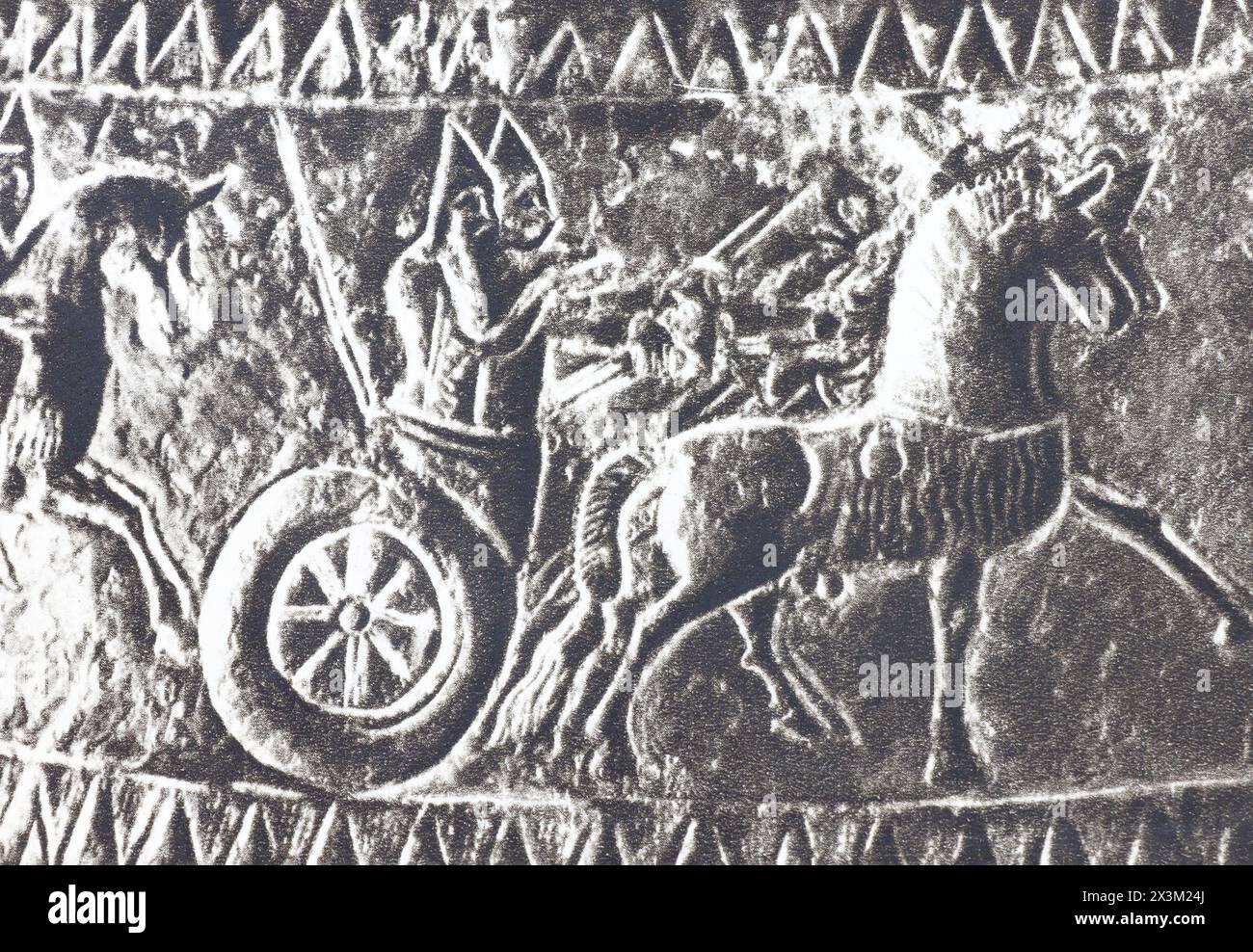 Urartian war chariot. Relief from the bronze helmet of King Argishti I. Photograph from the mid-20th century. Stock Photohttps://www.alamy.com/image-license-details/?v=1https://www.alamy.com/urartian-war-chariot-relief-from-the-bronze-helmet-of-king-argishti-i-photograph-from-the-mid-20th-century-image604647586.html
Urartian war chariot. Relief from the bronze helmet of King Argishti I. Photograph from the mid-20th century. Stock Photohttps://www.alamy.com/image-license-details/?v=1https://www.alamy.com/urartian-war-chariot-relief-from-the-bronze-helmet-of-king-argishti-i-photograph-from-the-mid-20th-century-image604647586.htmlRM2X3M24J–Urartian war chariot. Relief from the bronze helmet of King Argishti I. Photograph from the mid-20th century.
 Silver wine pourer from Alt?ntepe, an Urartian fortress dating from the 9th-7th century BCE Stock Photohttps://www.alamy.com/image-license-details/?v=1https://www.alamy.com/stock-photo-silver-wine-pourer-from-altntepe-an-urartian-fortress-dating-from-104151073.html
Silver wine pourer from Alt?ntepe, an Urartian fortress dating from the 9th-7th century BCE Stock Photohttps://www.alamy.com/image-license-details/?v=1https://www.alamy.com/stock-photo-silver-wine-pourer-from-altntepe-an-urartian-fortress-dating-from-104151073.htmlRMG1CDN5–Silver wine pourer from Alt?ntepe, an Urartian fortress dating from the 9th-7th century BCE
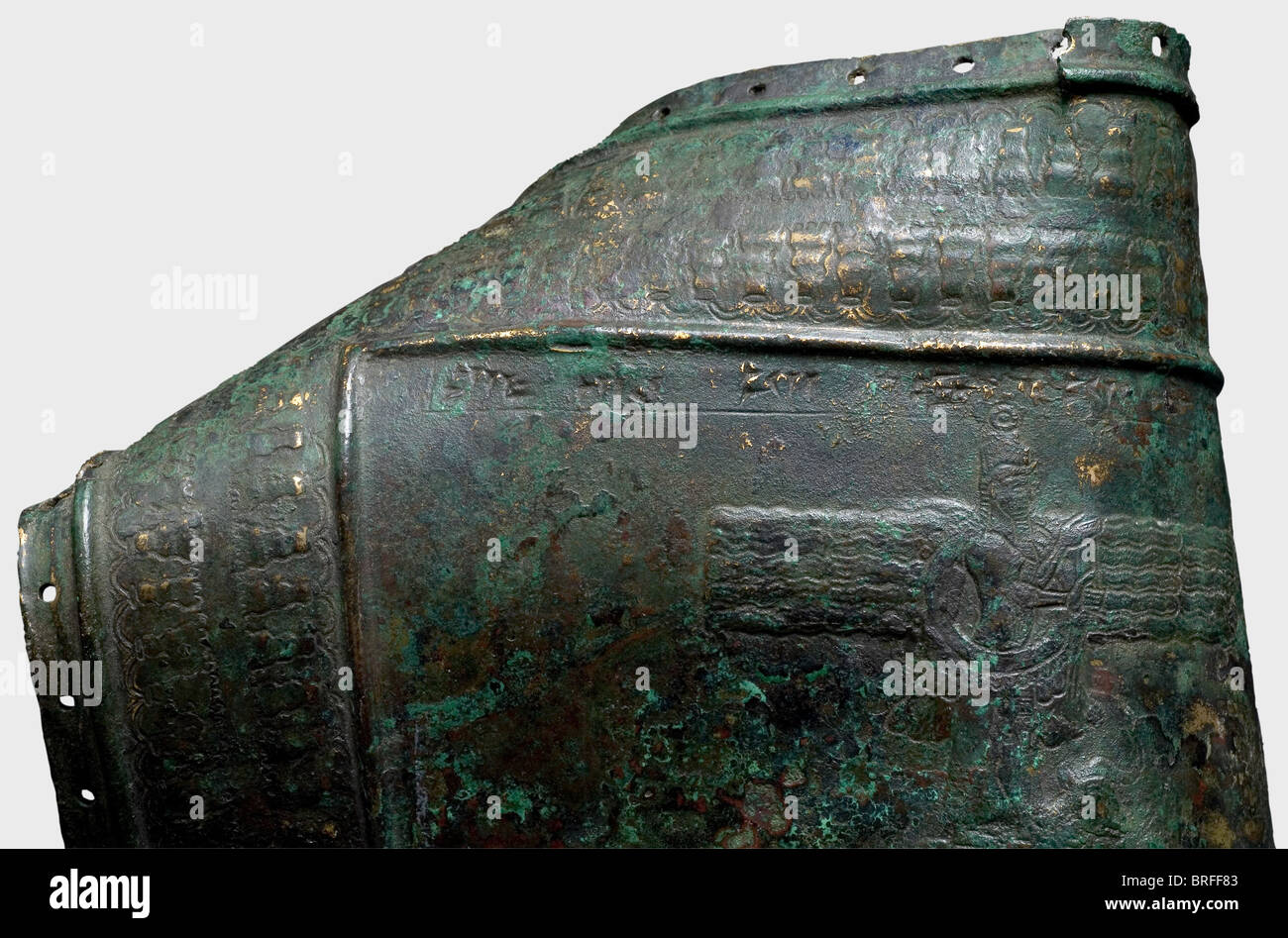 An Urartian pectoral with inscription, 830 - 810 B.C. Bronze, the lower part of an originally two-piece Urartian peytral, which were loosely connected by rings. Heavy, trapezoidal horse tack, intentionally deformed after heating, and edged with embossed and chiselled double borders of decorative bows with hanging tassels or tails. Displayed in the centre of the upper field is a bearded deity (unidentified, Haldi?, Teisheba?, Shivini?) with a horned crown standing on an bull in the winged disk, above one line of cuneiform script, 'Property of historic, historica, Stock Photohttps://www.alamy.com/image-license-details/?v=1https://www.alamy.com/stock-photo-an-urartian-pectoral-with-inscription-830-810-bc-bronze-the-lower-31688723.html
An Urartian pectoral with inscription, 830 - 810 B.C. Bronze, the lower part of an originally two-piece Urartian peytral, which were loosely connected by rings. Heavy, trapezoidal horse tack, intentionally deformed after heating, and edged with embossed and chiselled double borders of decorative bows with hanging tassels or tails. Displayed in the centre of the upper field is a bearded deity (unidentified, Haldi?, Teisheba?, Shivini?) with a horned crown standing on an bull in the winged disk, above one line of cuneiform script, 'Property of historic, historica, Stock Photohttps://www.alamy.com/image-license-details/?v=1https://www.alamy.com/stock-photo-an-urartian-pectoral-with-inscription-830-810-bc-bronze-the-lower-31688723.htmlRMBRFF83–An Urartian pectoral with inscription, 830 - 810 B.C. Bronze, the lower part of an originally two-piece Urartian peytral, which were loosely connected by rings. Heavy, trapezoidal horse tack, intentionally deformed after heating, and edged with embossed and chiselled double borders of decorative bows with hanging tassels or tails. Displayed in the centre of the upper field is a bearded deity (unidentified, Haldi?, Teisheba?, Shivini?) with a horned crown standing on an bull in the winged disk, above one line of cuneiform script, 'Property of historic, historica,
 Pin terminating in three eagles' heads. Culture: Urartian. Dimensions: 3.19 in. (8.1 cm). Date: ca. 7th century B.C.. Museum: Metropolitan Museum of Art, New York, USA. Stock Photohttps://www.alamy.com/image-license-details/?v=1https://www.alamy.com/pin-terminating-in-three-eagles-heads-culture-urartian-dimensions-319-in-81-cm-date-ca-7th-century-bc-museum-metropolitan-museum-of-art-new-york-usa-image213259332.html
Pin terminating in three eagles' heads. Culture: Urartian. Dimensions: 3.19 in. (8.1 cm). Date: ca. 7th century B.C.. Museum: Metropolitan Museum of Art, New York, USA. Stock Photohttps://www.alamy.com/image-license-details/?v=1https://www.alamy.com/pin-terminating-in-three-eagles-heads-culture-urartian-dimensions-319-in-81-cm-date-ca-7th-century-bc-museum-metropolitan-museum-of-art-new-york-usa-image213259332.htmlRMPAXPCM–Pin terminating in three eagles' heads. Culture: Urartian. Dimensions: 3.19 in. (8.1 cm). Date: ca. 7th century B.C.. Museum: Metropolitan Museum of Art, New York, USA.
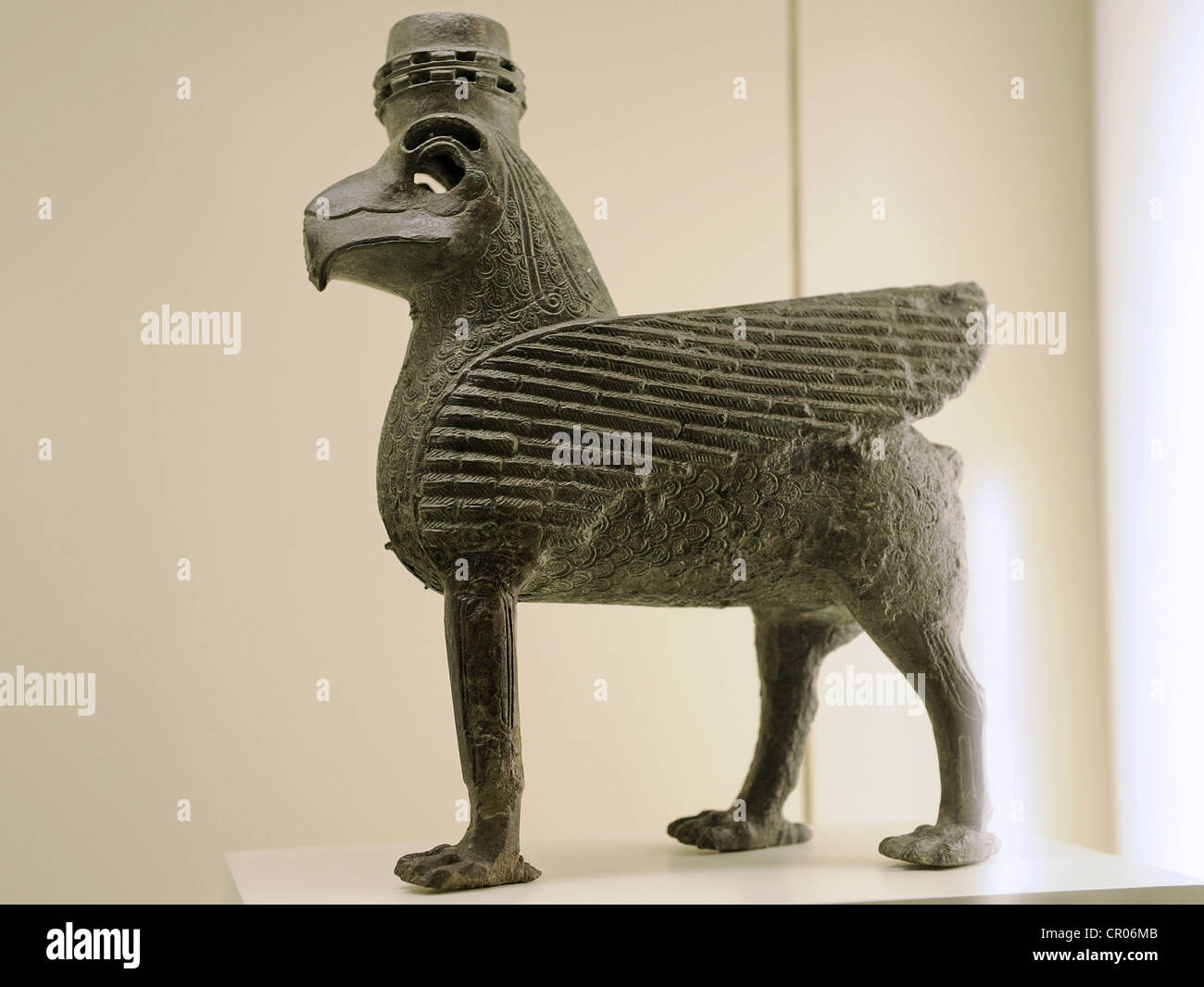 Urartu civilization. Bronze Sphinx. From Tushpa or Toprakkale. 7th century B.C. Turkey. Pergamon Museum. Berlin. Germany. Stock Photohttps://www.alamy.com/image-license-details/?v=1https://www.alamy.com/stock-photo-urartu-civilization-bronze-sphinx-from-tushpa-or-toprakkale-7th-century-48563099.html
Urartu civilization. Bronze Sphinx. From Tushpa or Toprakkale. 7th century B.C. Turkey. Pergamon Museum. Berlin. Germany. Stock Photohttps://www.alamy.com/image-license-details/?v=1https://www.alamy.com/stock-photo-urartu-civilization-bronze-sphinx-from-tushpa-or-toprakkale-7th-century-48563099.htmlRMCR06MB–Urartu civilization. Bronze Sphinx. From Tushpa or Toprakkale. 7th century B.C. Turkey. Pergamon Museum. Berlin. Germany.
 Helmet Urartian king with the emblem of the God of thunderstorms. Stock Photohttps://www.alamy.com/image-license-details/?v=1https://www.alamy.com/helmet-urartian-king-with-the-emblem-of-the-god-of-thunderstorms-image242365791.html
Helmet Urartian king with the emblem of the God of thunderstorms. Stock Photohttps://www.alamy.com/image-license-details/?v=1https://www.alamy.com/helmet-urartian-king-with-the-emblem-of-the-god-of-thunderstorms-image242365791.htmlRFT28M13–Helmet Urartian king with the emblem of the God of thunderstorms.
 Turkey East Anatolia Cavustepe Cuneiform at Urartian fortress Sardurihinili Stock Photohttps://www.alamy.com/image-license-details/?v=1https://www.alamy.com/stock-photo-turkey-east-anatolia-cavustepe-cuneiform-at-urartian-fortress-sardurihinili-75248172.html
Turkey East Anatolia Cavustepe Cuneiform at Urartian fortress Sardurihinili Stock Photohttps://www.alamy.com/image-license-details/?v=1https://www.alamy.com/stock-photo-turkey-east-anatolia-cavustepe-cuneiform-at-urartian-fortress-sardurihinili-75248172.htmlRMEABRPM–Turkey East Anatolia Cavustepe Cuneiform at Urartian fortress Sardurihinili
 Urartian Tablet03 Stock Photohttps://www.alamy.com/image-license-details/?v=1https://www.alamy.com/stock-photo-urartian-tablet03-140695726.html
Urartian Tablet03 Stock Photohttps://www.alamy.com/image-license-details/?v=1https://www.alamy.com/stock-photo-urartian-tablet03-140695726.htmlRMJ4W6RA–Urartian Tablet03
 Carved Stone Horse, with Carved Saddle, Stirrups and Harness, an Urartian Funerary Sculpture from the Iron Age Urarta Civilization (c8th-c6thBC), around Van Turkey Stock Photohttps://www.alamy.com/image-license-details/?v=1https://www.alamy.com/stock-photo-carved-stone-horse-with-carved-saddle-stirrups-and-harness-an-urartian-131607756.html
Carved Stone Horse, with Carved Saddle, Stirrups and Harness, an Urartian Funerary Sculpture from the Iron Age Urarta Civilization (c8th-c6thBC), around Van Turkey Stock Photohttps://www.alamy.com/image-license-details/?v=1https://www.alamy.com/stock-photo-carved-stone-horse-with-carved-saddle-stirrups-and-harness-an-urartian-131607756.htmlRMHJ3710–Carved Stone Horse, with Carved Saddle, Stirrups and Harness, an Urartian Funerary Sculpture from the Iron Age Urarta Civilization (c8th-c6thBC), around Van Turkey
 Urartian Fresco05 Stock Photohttps://www.alamy.com/image-license-details/?v=1https://www.alamy.com/stock-photo-urartian-fresco05-140690606.html
Urartian Fresco05 Stock Photohttps://www.alamy.com/image-license-details/?v=1https://www.alamy.com/stock-photo-urartian-fresco05-140690606.htmlRMJ4W08E–Urartian Fresco05
 Art inspired by Belt ornament in the form of a bird demon, Iron Age III, ca. late 8th–7th century B.C., Urartu, Urartian, Bronze, 3.23 x 4.57 in. (8.2 x 11.61 cm), Metalwork-Ornaments, Classic works modernized by Artotop with a splash of modernity. Shapes, color and value, eye-catching visual impact on art. Emotions through freedom of artworks in a contemporary way. A timeless message pursuing a wildly creative new direction. Artists turning to the digital medium and creating the Artotop NFT Stock Photohttps://www.alamy.com/image-license-details/?v=1https://www.alamy.com/art-inspired-by-belt-ornament-in-the-form-of-a-bird-demon-iron-age-iii-ca-late-8th7th-century-bc-urartu-urartian-bronze-323-x-457-in-82-x-1161-cm-metalwork-ornaments-classic-works-modernized-by-artotop-with-a-splash-of-modernity-shapes-color-and-value-eye-catching-visual-impact-on-art-emotions-through-freedom-of-artworks-in-a-contemporary-way-a-timeless-message-pursuing-a-wildly-creative-new-direction-artists-turning-to-the-digital-medium-and-creating-the-artotop-nft-image462945103.html
Art inspired by Belt ornament in the form of a bird demon, Iron Age III, ca. late 8th–7th century B.C., Urartu, Urartian, Bronze, 3.23 x 4.57 in. (8.2 x 11.61 cm), Metalwork-Ornaments, Classic works modernized by Artotop with a splash of modernity. Shapes, color and value, eye-catching visual impact on art. Emotions through freedom of artworks in a contemporary way. A timeless message pursuing a wildly creative new direction. Artists turning to the digital medium and creating the Artotop NFT Stock Photohttps://www.alamy.com/image-license-details/?v=1https://www.alamy.com/art-inspired-by-belt-ornament-in-the-form-of-a-bird-demon-iron-age-iii-ca-late-8th7th-century-bc-urartu-urartian-bronze-323-x-457-in-82-x-1161-cm-metalwork-ornaments-classic-works-modernized-by-artotop-with-a-splash-of-modernity-shapes-color-and-value-eye-catching-visual-impact-on-art-emotions-through-freedom-of-artworks-in-a-contemporary-way-a-timeless-message-pursuing-a-wildly-creative-new-direction-artists-turning-to-the-digital-medium-and-creating-the-artotop-nft-image462945103.htmlRF2HW4Y5K–Art inspired by Belt ornament in the form of a bird demon, Iron Age III, ca. late 8th–7th century B.C., Urartu, Urartian, Bronze, 3.23 x 4.57 in. (8.2 x 11.61 cm), Metalwork-Ornaments, Classic works modernized by Artotop with a splash of modernity. Shapes, color and value, eye-catching visual impact on art. Emotions through freedom of artworks in a contemporary way. A timeless message pursuing a wildly creative new direction. Artists turning to the digital medium and creating the Artotop NFT
 Belt fragments with deities on bulls and lions, Urartian, Iron Age III, Date ca. 7th century B.C., Urartu, Urartian, Bronze, 3.94 x 29.45 in. (10.01 x 74.8 cm), Metalwork-Ornaments Stock Photohttps://www.alamy.com/image-license-details/?v=1https://www.alamy.com/belt-fragments-with-deities-on-bulls-and-lions-urartian-iron-age-iii-date-ca-7th-century-bc-urartu-urartian-bronze-394-x-2945-in-1001-x-748-cm-metalwork-ornaments-image344666508.html
Belt fragments with deities on bulls and lions, Urartian, Iron Age III, Date ca. 7th century B.C., Urartu, Urartian, Bronze, 3.94 x 29.45 in. (10.01 x 74.8 cm), Metalwork-Ornaments Stock Photohttps://www.alamy.com/image-license-details/?v=1https://www.alamy.com/belt-fragments-with-deities-on-bulls-and-lions-urartian-iron-age-iii-date-ca-7th-century-bc-urartu-urartian-bronze-394-x-2945-in-1001-x-748-cm-metalwork-ornaments-image344666508.htmlRM2B0MWJ4–Belt fragments with deities on bulls and lions, Urartian, Iron Age III, Date ca. 7th century B.C., Urartu, Urartian, Bronze, 3.94 x 29.45 in. (10.01 x 74.8 cm), Metalwork-Ornaments
 Art inspired by Belt fragment, Iron Age III, ca. 7th century B.C., Urartu, Urartian, Bronze, 3.54 x 12.87 in. (8.99 x 32.69 cm), Metalwork-Ornaments, This is but one of hundreds of Urartian belts known to exist, all decorated with a variety of scenes—hunts, animals, deities, etc. Here, Classic works modernized by Artotop with a splash of modernity. Shapes, color and value, eye-catching visual impact on art. Emotions through freedom of artworks in a contemporary way. A timeless message pursuing a wildly creative new direction. Artists turning to the digital medium and creating the Artotop NFT Stock Photohttps://www.alamy.com/image-license-details/?v=1https://www.alamy.com/art-inspired-by-belt-fragment-iron-age-iii-ca-7th-century-bc-urartu-urartian-bronze-354-x-1287-in-899-x-3269-cm-metalwork-ornaments-this-is-but-one-of-hundreds-of-urartian-belts-known-to-exist-all-decorated-with-a-variety-of-sceneshunts-animals-deities-etc-here-classic-works-modernized-by-artotop-with-a-splash-of-modernity-shapes-color-and-value-eye-catching-visual-impact-on-art-emotions-through-freedom-of-artworks-in-a-contemporary-way-a-timeless-message-pursuing-a-wildly-creative-new-direction-artists-turning-to-the-digital-medium-and-creating-the-artotop-nft-image462799251.html
Art inspired by Belt fragment, Iron Age III, ca. 7th century B.C., Urartu, Urartian, Bronze, 3.54 x 12.87 in. (8.99 x 32.69 cm), Metalwork-Ornaments, This is but one of hundreds of Urartian belts known to exist, all decorated with a variety of scenes—hunts, animals, deities, etc. Here, Classic works modernized by Artotop with a splash of modernity. Shapes, color and value, eye-catching visual impact on art. Emotions through freedom of artworks in a contemporary way. A timeless message pursuing a wildly creative new direction. Artists turning to the digital medium and creating the Artotop NFT Stock Photohttps://www.alamy.com/image-license-details/?v=1https://www.alamy.com/art-inspired-by-belt-fragment-iron-age-iii-ca-7th-century-bc-urartu-urartian-bronze-354-x-1287-in-899-x-3269-cm-metalwork-ornaments-this-is-but-one-of-hundreds-of-urartian-belts-known-to-exist-all-decorated-with-a-variety-of-sceneshunts-animals-deities-etc-here-classic-works-modernized-by-artotop-with-a-splash-of-modernity-shapes-color-and-value-eye-catching-visual-impact-on-art-emotions-through-freedom-of-artworks-in-a-contemporary-way-a-timeless-message-pursuing-a-wildly-creative-new-direction-artists-turning-to-the-digital-medium-and-creating-the-artotop-nft-image462799251.htmlRF2HTX94K–Art inspired by Belt fragment, Iron Age III, ca. 7th century B.C., Urartu, Urartian, Bronze, 3.54 x 12.87 in. (8.99 x 32.69 cm), Metalwork-Ornaments, This is but one of hundreds of Urartian belts known to exist, all decorated with a variety of scenes—hunts, animals, deities, etc. Here, Classic works modernized by Artotop with a splash of modernity. Shapes, color and value, eye-catching visual impact on art. Emotions through freedom of artworks in a contemporary way. A timeless message pursuing a wildly creative new direction. Artists turning to the digital medium and creating the Artotop NFT
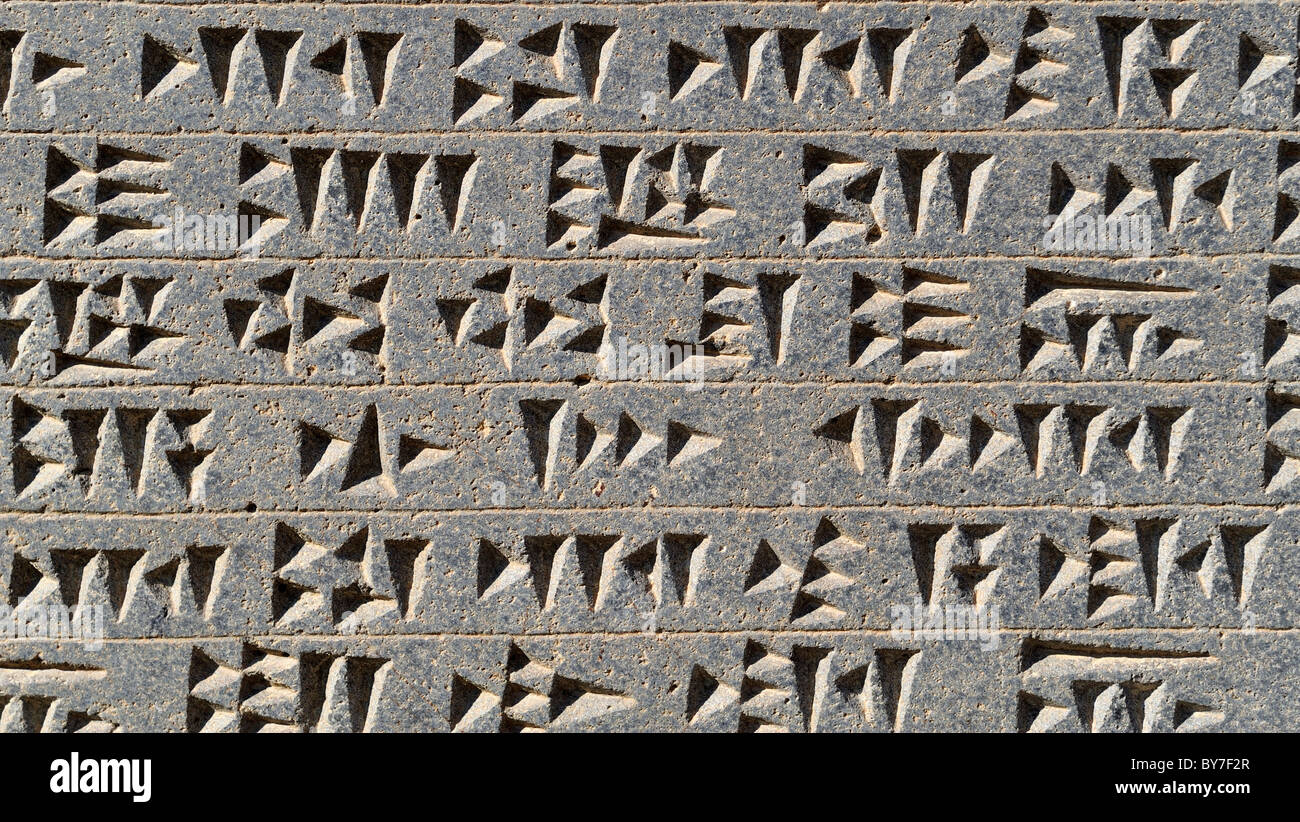 Urartu cuneiform at the temple entrance, Çavustepe Kalesi, Urartu fortress (built 764-735 BC), near Van, Turkey 100926 37117 Stock Photohttps://www.alamy.com/image-license-details/?v=1https://www.alamy.com/stock-photo-urartu-cuneiform-at-the-temple-entrance-avustepe-kalesi-urartu-fortress-33971583.html
Urartu cuneiform at the temple entrance, Çavustepe Kalesi, Urartu fortress (built 764-735 BC), near Van, Turkey 100926 37117 Stock Photohttps://www.alamy.com/image-license-details/?v=1https://www.alamy.com/stock-photo-urartu-cuneiform-at-the-temple-entrance-avustepe-kalesi-urartu-fortress-33971583.htmlRMBY7F2R–Urartu cuneiform at the temple entrance, Çavustepe Kalesi, Urartu fortress (built 764-735 BC), near Van, Turkey 100926 37117
 Ruins of the Urartian citadel of Cavustepe, Van, Turkey Stock Photohttps://www.alamy.com/image-license-details/?v=1https://www.alamy.com/ruins-of-the-urartian-citadel-of-cavustepe-van-turkey-image605214802.html
Ruins of the Urartian citadel of Cavustepe, Van, Turkey Stock Photohttps://www.alamy.com/image-license-details/?v=1https://www.alamy.com/ruins-of-the-urartian-citadel-of-cavustepe-van-turkey-image605214802.htmlRF2X4HWJA–Ruins of the Urartian citadel of Cavustepe, Van, Turkey
 Urartian Carcanet Stock Photohttps://www.alamy.com/image-license-details/?v=1https://www.alamy.com/stock-photo-urartian-carcanet-140690551.html
Urartian Carcanet Stock Photohttps://www.alamy.com/image-license-details/?v=1https://www.alamy.com/stock-photo-urartian-carcanet-140690551.htmlRMJ4W06F–Urartian Carcanet
 Ruins of the Urartian citadel of Cavustepe, Van, Turkey Stock Photohttps://www.alamy.com/image-license-details/?v=1https://www.alamy.com/ruins-of-the-urartian-citadel-of-cavustepe-van-turkey-image605002882.html
Ruins of the Urartian citadel of Cavustepe, Van, Turkey Stock Photohttps://www.alamy.com/image-license-details/?v=1https://www.alamy.com/ruins-of-the-urartian-citadel-of-cavustepe-van-turkey-image605002882.htmlRF2X4879P–Ruins of the Urartian citadel of Cavustepe, Van, Turkey
 Van Kalesi (Van Castle) Urartian tomb Stock Photohttps://www.alamy.com/image-license-details/?v=1https://www.alamy.com/stock-photo-van-kalesi-van-castle-urartian-tomb-21252542.html
Van Kalesi (Van Castle) Urartian tomb Stock Photohttps://www.alamy.com/image-license-details/?v=1https://www.alamy.com/stock-photo-van-kalesi-van-castle-urartian-tomb-21252542.htmlRMB6G3RA–Van Kalesi (Van Castle) Urartian tomb
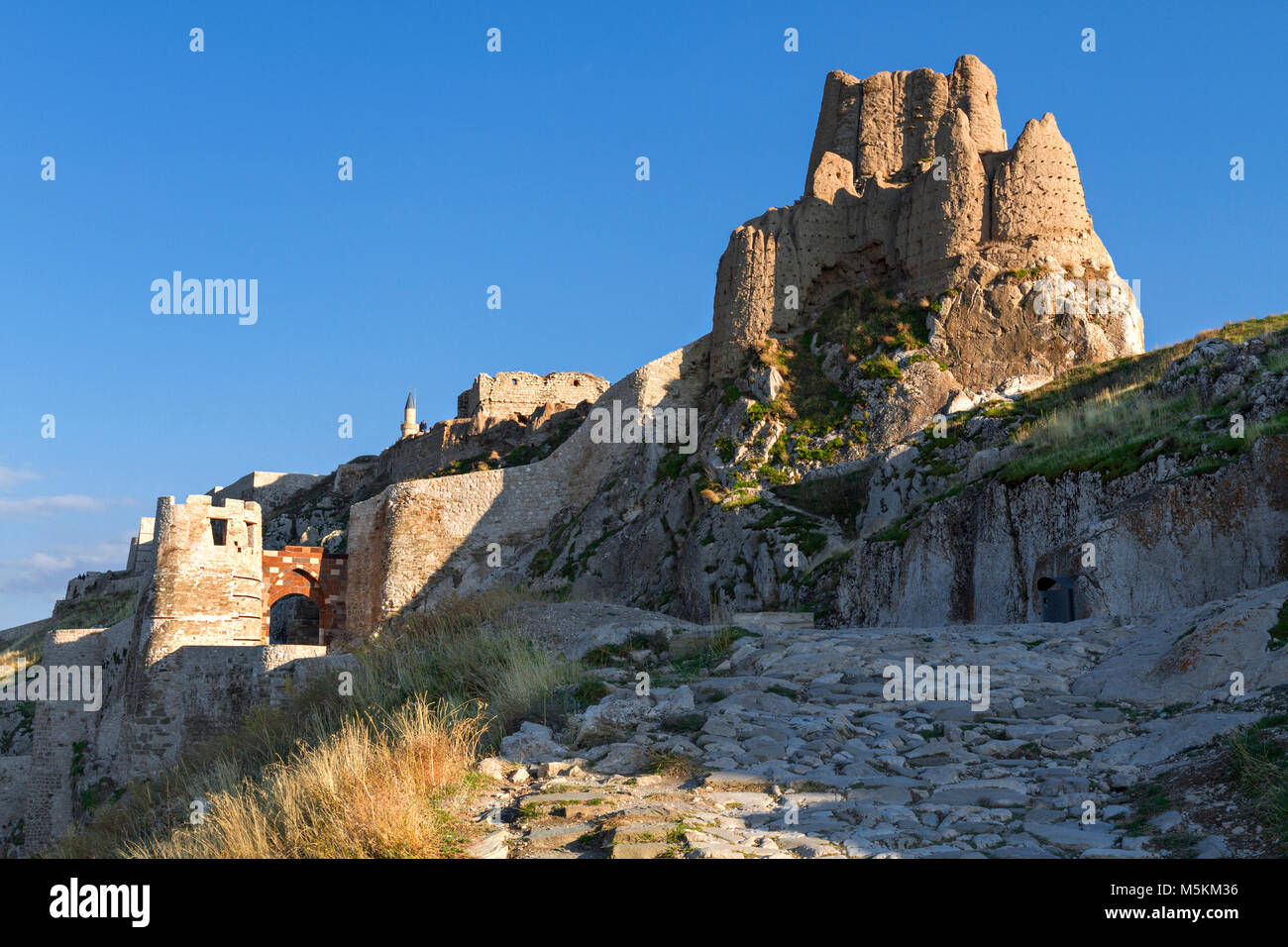 Van Castle, in Van, Turkey Stock Photohttps://www.alamy.com/image-license-details/?v=1https://www.alamy.com/stock-photo-van-castle-in-van-turkey-175609818.html
Van Castle, in Van, Turkey Stock Photohttps://www.alamy.com/image-license-details/?v=1https://www.alamy.com/stock-photo-van-castle-in-van-turkey-175609818.htmlRFM5KM36–Van Castle, in Van, Turkey
 622 Urartian Tablet03 Stock Photohttps://www.alamy.com/image-license-details/?v=1https://www.alamy.com/622-urartian-tablet03-image213869711.html
622 Urartian Tablet03 Stock Photohttps://www.alamy.com/image-license-details/?v=1https://www.alamy.com/622-urartian-tablet03-image213869711.htmlRMPBXGYY–622 Urartian Tablet03
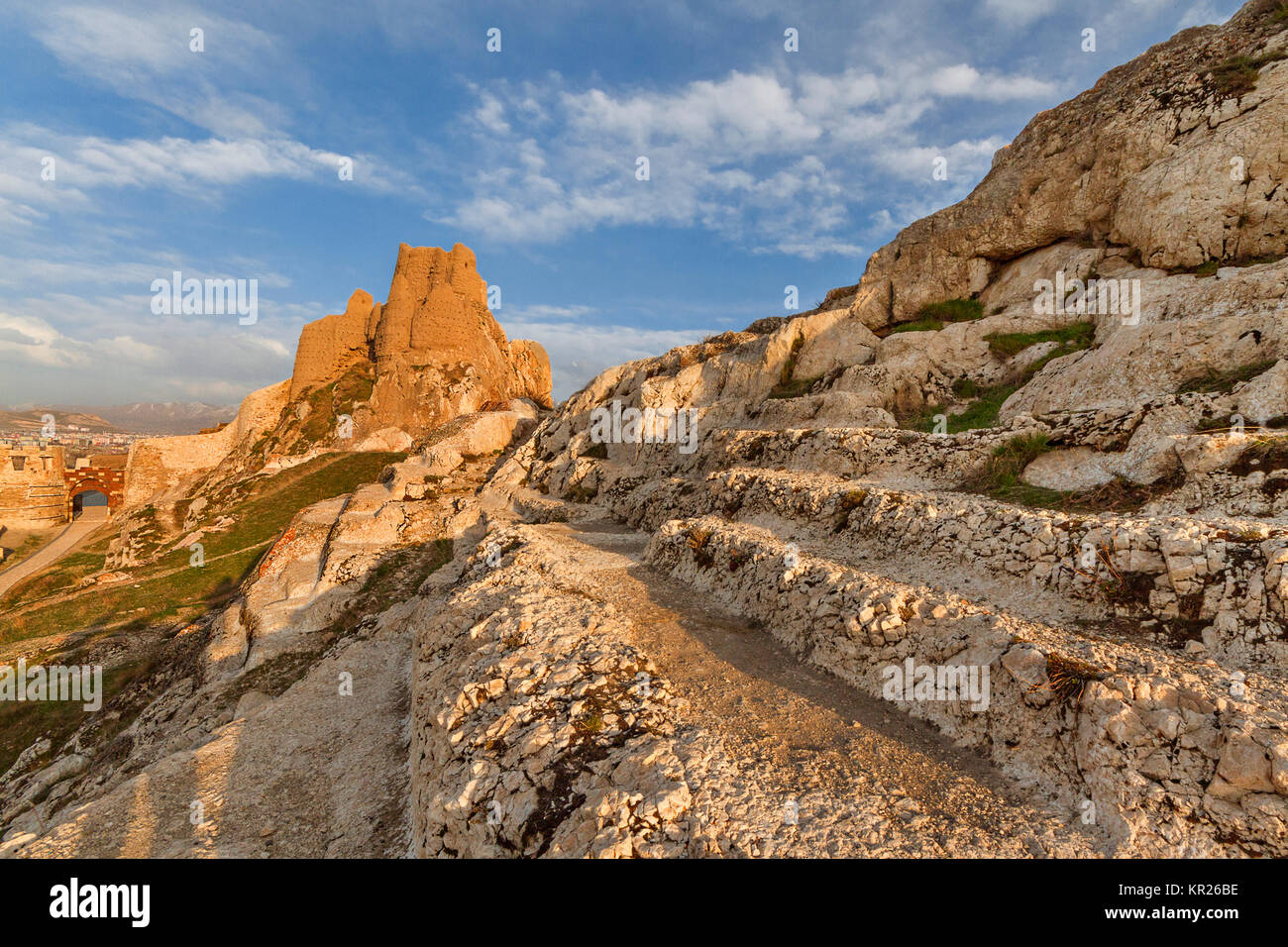 Ancient castle of Van in Turkey, known also as Tushba Castle, built by the Urartians. Stock Photohttps://www.alamy.com/image-license-details/?v=1https://www.alamy.com/stock-image-ancient-castle-of-van-in-turkey-known-also-as-tushba-castle-built-169079330.html
Ancient castle of Van in Turkey, known also as Tushba Castle, built by the Urartians. Stock Photohttps://www.alamy.com/image-license-details/?v=1https://www.alamy.com/stock-image-ancient-castle-of-van-in-turkey-known-also-as-tushba-castle-built-169079330.htmlRFKR26BE–Ancient castle of Van in Turkey, known also as Tushba Castle, built by the Urartians.
 An Urartian pectoral with inscription, 830 - 810 B.C. Bronze, the lower part of an originally two-piece Urartian peytral, which were loosely connected by rings. Heavy, trapezoidal horse tack, intentionally deformed after heating, and edged with embossed and chiselled double borders of decorative bows with hanging tassels or tails. Displayed in the centre of the upper field is a bearded deity (unidentified, Haldi?, Teisheba?, Shivini?) with a horned crown standing on an bull in the winged disk, above one line of cuneiform script, 'Property of historic, historica, Stock Photohttps://www.alamy.com/image-license-details/?v=1https://www.alamy.com/stock-photo-an-urartian-pectoral-with-inscription-830-810-bc-bronze-the-lower-31688740.html
An Urartian pectoral with inscription, 830 - 810 B.C. Bronze, the lower part of an originally two-piece Urartian peytral, which were loosely connected by rings. Heavy, trapezoidal horse tack, intentionally deformed after heating, and edged with embossed and chiselled double borders of decorative bows with hanging tassels or tails. Displayed in the centre of the upper field is a bearded deity (unidentified, Haldi?, Teisheba?, Shivini?) with a horned crown standing on an bull in the winged disk, above one line of cuneiform script, 'Property of historic, historica, Stock Photohttps://www.alamy.com/image-license-details/?v=1https://www.alamy.com/stock-photo-an-urartian-pectoral-with-inscription-830-810-bc-bronze-the-lower-31688740.htmlRMBRFF8M–An Urartian pectoral with inscription, 830 - 810 B.C. Bronze, the lower part of an originally two-piece Urartian peytral, which were loosely connected by rings. Heavy, trapezoidal horse tack, intentionally deformed after heating, and edged with embossed and chiselled double borders of decorative bows with hanging tassels or tails. Displayed in the centre of the upper field is a bearded deity (unidentified, Haldi?, Teisheba?, Shivini?) with a horned crown standing on an bull in the winged disk, above one line of cuneiform script, 'Property of historic, historica,
 Silver wine pourer from Alt?ntepe, an Urartian fortress dating from the 9th-7th century BCE Stock Photohttps://www.alamy.com/image-license-details/?v=1https://www.alamy.com/stock-photo-silver-wine-pourer-from-altntepe-an-urartian-fortress-dating-from-104151077.html
Silver wine pourer from Alt?ntepe, an Urartian fortress dating from the 9th-7th century BCE Stock Photohttps://www.alamy.com/image-license-details/?v=1https://www.alamy.com/stock-photo-silver-wine-pourer-from-altntepe-an-urartian-fortress-dating-from-104151077.htmlRMG1CDN9–Silver wine pourer from Alt?ntepe, an Urartian fortress dating from the 9th-7th century BCE
![Bell inscribed with the Urartian royal name Argishti. Culture: Urartian. Dimensions: 3.43 in. (8.71 cm). Date: ca. 789-766 B.C.. This classical Urartian bell has a domed top, an octagonal and perforated body with a central raised ridge, and a loop for suspension. The Urartian cuneiform inscription reads: 'From the arsenal of [King] Argishti.'. Museum: Metropolitan Museum of Art, New York, USA. Stock Photo Bell inscribed with the Urartian royal name Argishti. Culture: Urartian. Dimensions: 3.43 in. (8.71 cm). Date: ca. 789-766 B.C.. This classical Urartian bell has a domed top, an octagonal and perforated body with a central raised ridge, and a loop for suspension. The Urartian cuneiform inscription reads: 'From the arsenal of [King] Argishti.'. Museum: Metropolitan Museum of Art, New York, USA. Stock Photo](https://c8.alamy.com/comp/PAT1E8/bell-inscribed-with-the-urartian-royal-name-argishti-culture-urartian-dimensions-343-in-871-cm-date-ca-789-766-bc-this-classical-urartian-bell-has-a-domed-top-an-octagonal-and-perforated-body-with-a-central-raised-ridge-and-a-loop-for-suspension-the-urartian-cuneiform-inscription-reads-from-the-arsenal-of-king-argishti-museum-metropolitan-museum-of-art-new-york-usa-PAT1E8.jpg) Bell inscribed with the Urartian royal name Argishti. Culture: Urartian. Dimensions: 3.43 in. (8.71 cm). Date: ca. 789-766 B.C.. This classical Urartian bell has a domed top, an octagonal and perforated body with a central raised ridge, and a loop for suspension. The Urartian cuneiform inscription reads: 'From the arsenal of [King] Argishti.'. Museum: Metropolitan Museum of Art, New York, USA. Stock Photohttps://www.alamy.com/image-license-details/?v=1https://www.alamy.com/bell-inscribed-with-the-urartian-royal-name-argishti-culture-urartian-dimensions-343-in-871-cm-date-ca-789-766-bc-this-classical-urartian-bell-has-a-domed-top-an-octagonal-and-perforated-body-with-a-central-raised-ridge-and-a-loop-for-suspension-the-urartian-cuneiform-inscription-reads-from-the-arsenal-of-king-argishti-museum-metropolitan-museum-of-art-new-york-usa-image213199008.html
Bell inscribed with the Urartian royal name Argishti. Culture: Urartian. Dimensions: 3.43 in. (8.71 cm). Date: ca. 789-766 B.C.. This classical Urartian bell has a domed top, an octagonal and perforated body with a central raised ridge, and a loop for suspension. The Urartian cuneiform inscription reads: 'From the arsenal of [King] Argishti.'. Museum: Metropolitan Museum of Art, New York, USA. Stock Photohttps://www.alamy.com/image-license-details/?v=1https://www.alamy.com/bell-inscribed-with-the-urartian-royal-name-argishti-culture-urartian-dimensions-343-in-871-cm-date-ca-789-766-bc-this-classical-urartian-bell-has-a-domed-top-an-octagonal-and-perforated-body-with-a-central-raised-ridge-and-a-loop-for-suspension-the-urartian-cuneiform-inscription-reads-from-the-arsenal-of-king-argishti-museum-metropolitan-museum-of-art-new-york-usa-image213199008.htmlRMPAT1E8–Bell inscribed with the Urartian royal name Argishti. Culture: Urartian. Dimensions: 3.43 in. (8.71 cm). Date: ca. 789-766 B.C.. This classical Urartian bell has a domed top, an octagonal and perforated body with a central raised ridge, and a loop for suspension. The Urartian cuneiform inscription reads: 'From the arsenal of [King] Argishti.'. Museum: Metropolitan Museum of Art, New York, USA.
 Urartu civilization. Pectoral decorated with god Haldi on the throne and his wife Arubani and medaillon with seated goddess. Stock Photohttps://www.alamy.com/image-license-details/?v=1https://www.alamy.com/stock-photo-urartu-civilization-pectoral-decorated-with-god-haldi-on-the-throne-48640328.html
Urartu civilization. Pectoral decorated with god Haldi on the throne and his wife Arubani and medaillon with seated goddess. Stock Photohttps://www.alamy.com/image-license-details/?v=1https://www.alamy.com/stock-photo-urartu-civilization-pectoral-decorated-with-god-haldi-on-the-throne-48640328.htmlRMCR3N6G–Urartu civilization. Pectoral decorated with god Haldi on the throne and his wife Arubani and medaillon with seated goddess.
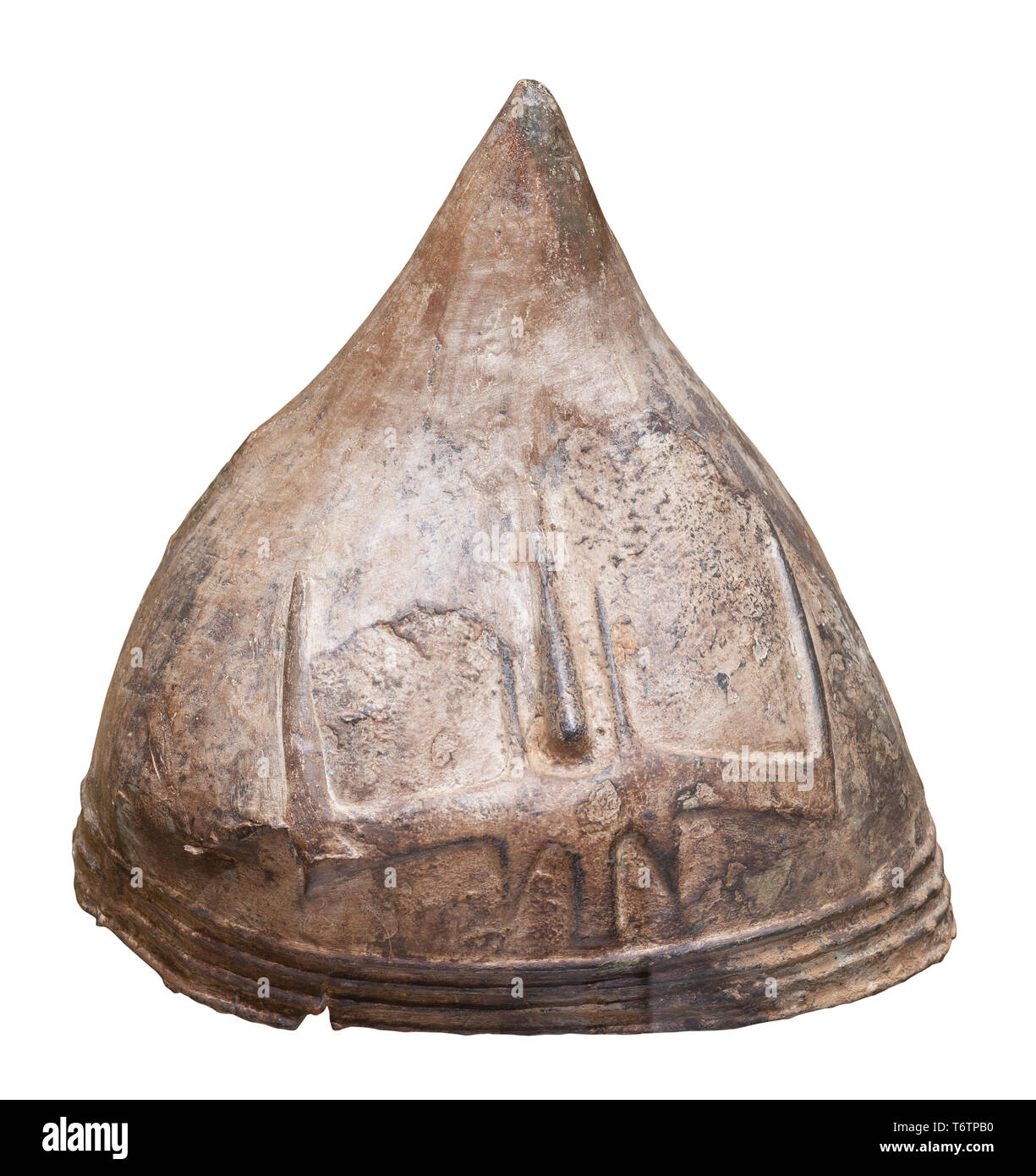 Helmet Urartian king with the emblem of the God of thunderstorms. Stock Photohttps://www.alamy.com/image-license-details/?v=1https://www.alamy.com/helmet-urartian-king-with-the-emblem-of-the-god-of-thunderstorms-image245177492.html
Helmet Urartian king with the emblem of the God of thunderstorms. Stock Photohttps://www.alamy.com/image-license-details/?v=1https://www.alamy.com/helmet-urartian-king-with-the-emblem-of-the-god-of-thunderstorms-image245177492.htmlRFT6TPB0–Helmet Urartian king with the emblem of the God of thunderstorms.
 542 Urartian Fresco05 Stock Photohttps://www.alamy.com/image-license-details/?v=1https://www.alamy.com/542-urartian-fresco05-image189054321.html
542 Urartian Fresco05 Stock Photohttps://www.alamy.com/image-license-details/?v=1https://www.alamy.com/542-urartian-fresco05-image189054321.htmlRMMYG4M1–542 Urartian Fresco05
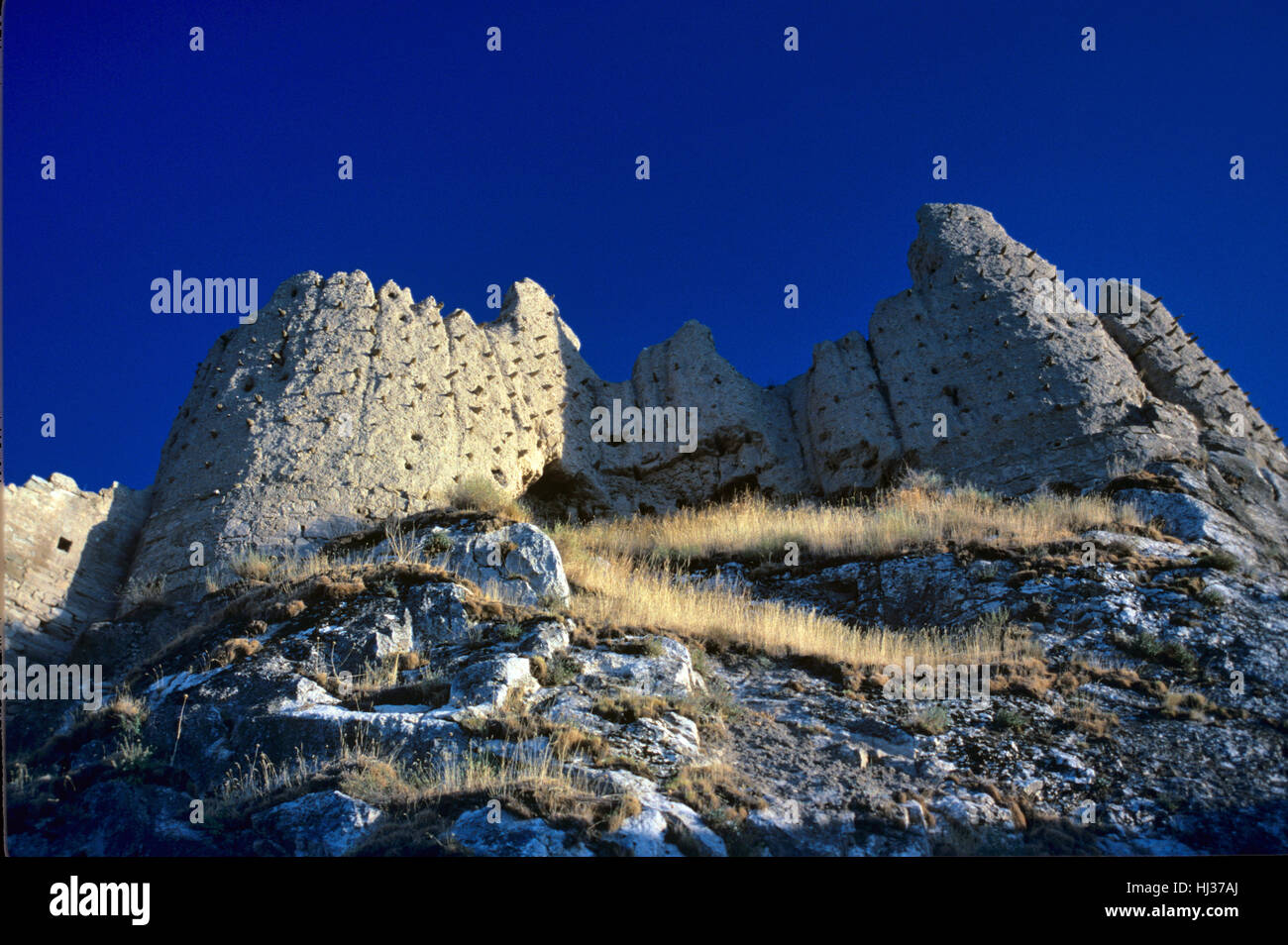 Van Castle or Fortress, ancient Tushba c8th-c9th BC, Van Turkey Stock Photohttps://www.alamy.com/image-license-details/?v=1https://www.alamy.com/stock-photo-van-castle-or-fortress-ancient-tushba-c8th-c9th-bc-van-turkey-131608026.html
Van Castle or Fortress, ancient Tushba c8th-c9th BC, Van Turkey Stock Photohttps://www.alamy.com/image-license-details/?v=1https://www.alamy.com/stock-photo-van-castle-or-fortress-ancient-tushba-c8th-c9th-bc-van-turkey-131608026.htmlRMHJ37AJ–Van Castle or Fortress, ancient Tushba c8th-c9th BC, Van Turkey
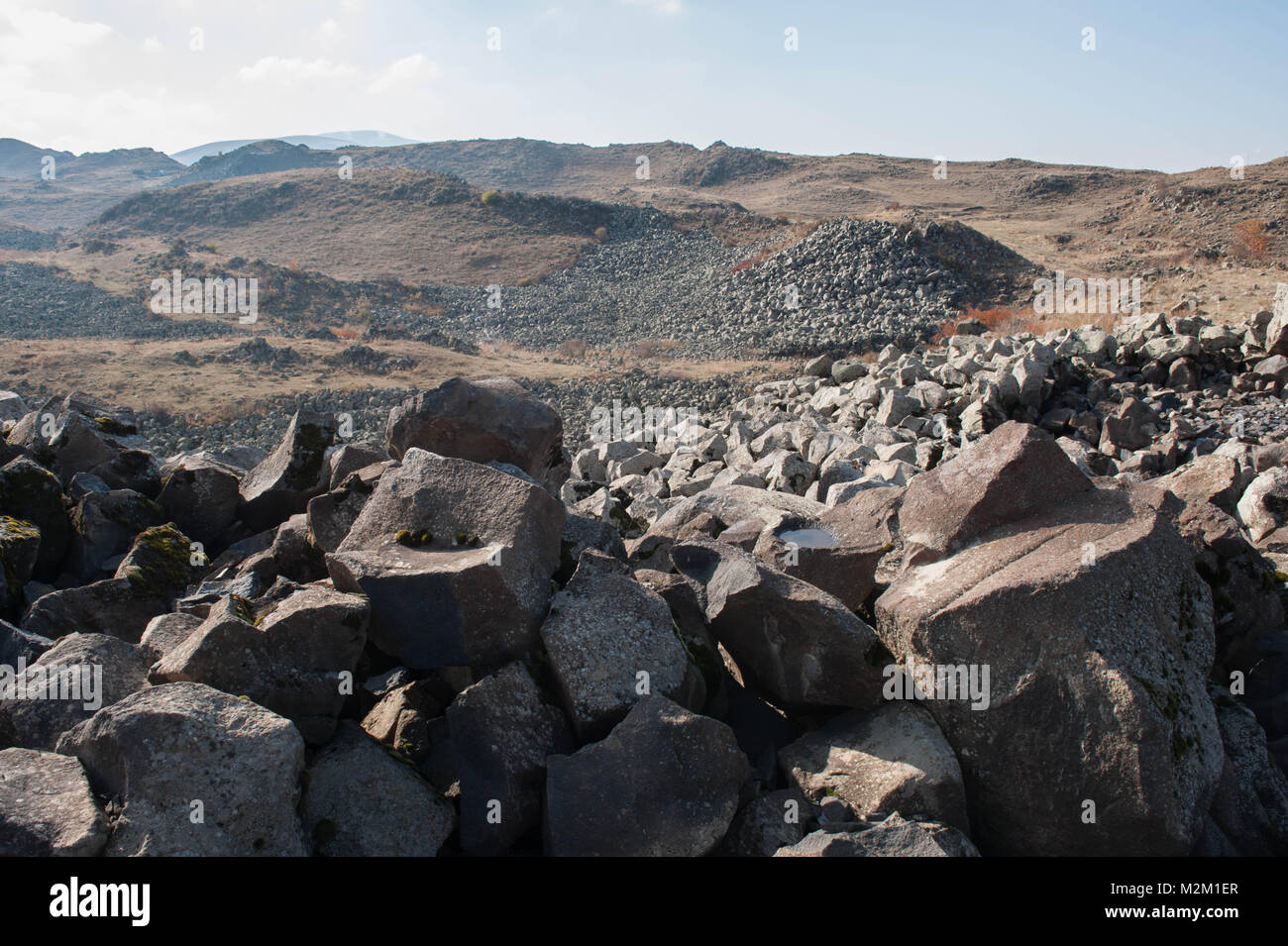 Urartu also known as Kingdom of Van was an Iron Age kingdom centred on Lake Van in the Armenian Highlands. Stock Photohttps://www.alamy.com/image-license-details/?v=1https://www.alamy.com/stock-photo-urartu-also-known-as-kingdom-of-van-was-an-iron-age-kingdom-centred-173773231.html
Urartu also known as Kingdom of Van was an Iron Age kingdom centred on Lake Van in the Armenian Highlands. Stock Photohttps://www.alamy.com/image-license-details/?v=1https://www.alamy.com/stock-photo-urartu-also-known-as-kingdom-of-van-was-an-iron-age-kingdom-centred-173773231.htmlRFM2M1ER–Urartu also known as Kingdom of Van was an Iron Age kingdom centred on Lake Van in the Armenian Highlands.
 Urartian Tablet03 Stock Photohttps://www.alamy.com/image-license-details/?v=1https://www.alamy.com/stock-photo-urartian-tablet03-132445958.html
Urartian Tablet03 Stock Photohttps://www.alamy.com/image-license-details/?v=1https://www.alamy.com/stock-photo-urartian-tablet03-132445958.htmlRMHKDC4P–Urartian Tablet03
 Belt with scenes of bull and lion hunts, Urartian, Iron Age III, Date ca. late 8th–7th century B.C., Urartu, Urartian, Bronze, 5.43 x 39.37 in. (13.79 x 100 cm), Metalwork-Ornaments Stock Photohttps://www.alamy.com/image-license-details/?v=1https://www.alamy.com/belt-with-scenes-of-bull-and-lion-hunts-urartian-iron-age-iii-date-ca-late-8th7th-century-bc-urartu-urartian-bronze-543-x-3937-in-1379-x-100-cm-metalwork-ornaments-image344669035.html
Belt with scenes of bull and lion hunts, Urartian, Iron Age III, Date ca. late 8th–7th century B.C., Urartu, Urartian, Bronze, 5.43 x 39.37 in. (13.79 x 100 cm), Metalwork-Ornaments Stock Photohttps://www.alamy.com/image-license-details/?v=1https://www.alamy.com/belt-with-scenes-of-bull-and-lion-hunts-urartian-iron-age-iii-date-ca-late-8th7th-century-bc-urartu-urartian-bronze-543-x-3937-in-1379-x-100-cm-metalwork-ornaments-image344669035.htmlRM2B0N0TB–Belt with scenes of bull and lion hunts, Urartian, Iron Age III, Date ca. late 8th–7th century B.C., Urartu, Urartian, Bronze, 5.43 x 39.37 in. (13.79 x 100 cm), Metalwork-Ornaments
 Art inspired by Bell inscribed with the Urartian royal name Argishti, Iron Age III, ca. 789–766 B.C., Urartu, Urartian, Bronze, iron, 3.43 in. (8.71 cm), Metalwork-Equestrian-Inscribed, This classical Urartian bell has a domed top, an octagonal and perforated body with a central raised, Classic works modernized by Artotop with a splash of modernity. Shapes, color and value, eye-catching visual impact on art. Emotions through freedom of artworks in a contemporary way. A timeless message pursuing a wildly creative new direction. Artists turning to the digital medium and creating the Artotop NFT Stock Photohttps://www.alamy.com/image-license-details/?v=1https://www.alamy.com/art-inspired-by-bell-inscribed-with-the-urartian-royal-name-argishti-iron-age-iii-ca-789766-bc-urartu-urartian-bronze-iron-343-in-871-cm-metalwork-equestrian-inscribed-this-classical-urartian-bell-has-a-domed-top-an-octagonal-and-perforated-body-with-a-central-raised-classic-works-modernized-by-artotop-with-a-splash-of-modernity-shapes-color-and-value-eye-catching-visual-impact-on-art-emotions-through-freedom-of-artworks-in-a-contemporary-way-a-timeless-message-pursuing-a-wildly-creative-new-direction-artists-turning-to-the-digital-medium-and-creating-the-artotop-nft-image462945037.html
Art inspired by Bell inscribed with the Urartian royal name Argishti, Iron Age III, ca. 789–766 B.C., Urartu, Urartian, Bronze, iron, 3.43 in. (8.71 cm), Metalwork-Equestrian-Inscribed, This classical Urartian bell has a domed top, an octagonal and perforated body with a central raised, Classic works modernized by Artotop with a splash of modernity. Shapes, color and value, eye-catching visual impact on art. Emotions through freedom of artworks in a contemporary way. A timeless message pursuing a wildly creative new direction. Artists turning to the digital medium and creating the Artotop NFT Stock Photohttps://www.alamy.com/image-license-details/?v=1https://www.alamy.com/art-inspired-by-bell-inscribed-with-the-urartian-royal-name-argishti-iron-age-iii-ca-789766-bc-urartu-urartian-bronze-iron-343-in-871-cm-metalwork-equestrian-inscribed-this-classical-urartian-bell-has-a-domed-top-an-octagonal-and-perforated-body-with-a-central-raised-classic-works-modernized-by-artotop-with-a-splash-of-modernity-shapes-color-and-value-eye-catching-visual-impact-on-art-emotions-through-freedom-of-artworks-in-a-contemporary-way-a-timeless-message-pursuing-a-wildly-creative-new-direction-artists-turning-to-the-digital-medium-and-creating-the-artotop-nft-image462945037.htmlRF2HW4Y39–Art inspired by Bell inscribed with the Urartian royal name Argishti, Iron Age III, ca. 789–766 B.C., Urartu, Urartian, Bronze, iron, 3.43 in. (8.71 cm), Metalwork-Equestrian-Inscribed, This classical Urartian bell has a domed top, an octagonal and perforated body with a central raised, Classic works modernized by Artotop with a splash of modernity. Shapes, color and value, eye-catching visual impact on art. Emotions through freedom of artworks in a contemporary way. A timeless message pursuing a wildly creative new direction. Artists turning to the digital medium and creating the Artotop NFT
 Van Kale, Turkey 100926 37280 Stock Photohttps://www.alamy.com/image-license-details/?v=1https://www.alamy.com/stock-photo-van-kale-turkey-100926-37280-34024068.html
Van Kale, Turkey 100926 37280 Stock Photohttps://www.alamy.com/image-license-details/?v=1https://www.alamy.com/stock-photo-van-kale-turkey-100926-37280-34024068.htmlRMBY9X18–Van Kale, Turkey 100926 37280
 Ruins of the Urartian citadel of Cavustepe, Van, Turkey Stock Photohttps://www.alamy.com/image-license-details/?v=1https://www.alamy.com/ruins-of-the-urartian-citadel-of-cavustepe-van-turkey-image605214794.html
Ruins of the Urartian citadel of Cavustepe, Van, Turkey Stock Photohttps://www.alamy.com/image-license-details/?v=1https://www.alamy.com/ruins-of-the-urartian-citadel-of-cavustepe-van-turkey-image605214794.htmlRF2X4HWJ2–Ruins of the Urartian citadel of Cavustepe, Van, Turkey
 Urartian Fresco04 Stock Photohttps://www.alamy.com/image-license-details/?v=1https://www.alamy.com/stock-photo-urartian-fresco04-140690562.html
Urartian Fresco04 Stock Photohttps://www.alamy.com/image-license-details/?v=1https://www.alamy.com/stock-photo-urartian-fresco04-140690562.htmlRMJ4W06X–Urartian Fresco04
 Ruins of the Urartian citadel of Cavustepe, Van, Turkey Stock Photohttps://www.alamy.com/image-license-details/?v=1https://www.alamy.com/ruins-of-the-urartian-citadel-of-cavustepe-van-turkey-image605002879.html
Ruins of the Urartian citadel of Cavustepe, Van, Turkey Stock Photohttps://www.alamy.com/image-license-details/?v=1https://www.alamy.com/ruins-of-the-urartian-citadel-of-cavustepe-van-turkey-image605002879.htmlRF2X4879K–Ruins of the Urartian citadel of Cavustepe, Van, Turkey
 Urartian Fresco02 Stock Photohttps://www.alamy.com/image-license-details/?v=1https://www.alamy.com/stock-photo-urartian-fresco02-140690339.html
Urartian Fresco02 Stock Photohttps://www.alamy.com/image-license-details/?v=1https://www.alamy.com/stock-photo-urartian-fresco02-140690339.htmlRMJ4TYXY–Urartian Fresco02
 Van Kalesi (Van Castle), a Urartian citadel fortress from 8th century BC Stock Photohttps://www.alamy.com/image-license-details/?v=1https://www.alamy.com/stock-photo-van-kalesi-van-castle-a-urartian-citadel-fortress-from-8th-century-21252690.html
Van Kalesi (Van Castle), a Urartian citadel fortress from 8th century BC Stock Photohttps://www.alamy.com/image-license-details/?v=1https://www.alamy.com/stock-photo-van-kalesi-van-castle-a-urartian-citadel-fortress-from-8th-century-21252690.htmlRMB6G40J–Van Kalesi (Van Castle), a Urartian citadel fortress from 8th century BC
 Urartian Tablet 12 Stock Photohttps://www.alamy.com/image-license-details/?v=1https://www.alamy.com/stock-photo-urartian-tablet-12-140689232.html
Urartian Tablet 12 Stock Photohttps://www.alamy.com/image-license-details/?v=1https://www.alamy.com/stock-photo-urartian-tablet-12-140689232.htmlRMJ4TXFC–Urartian Tablet 12
 Ancient castle of Van in Turkey, known also as Tushba Castle, built the Urartians. Stock Photohttps://www.alamy.com/image-license-details/?v=1https://www.alamy.com/stock-image-ancient-castle-of-van-in-turkey-known-also-as-tushba-castle-built-169079265.html
Ancient castle of Van in Turkey, known also as Tushba Castle, built the Urartians. Stock Photohttps://www.alamy.com/image-license-details/?v=1https://www.alamy.com/stock-image-ancient-castle-of-van-in-turkey-known-also-as-tushba-castle-built-169079265.htmlRFKR2695–Ancient castle of Van in Turkey, known also as Tushba Castle, built the Urartians.
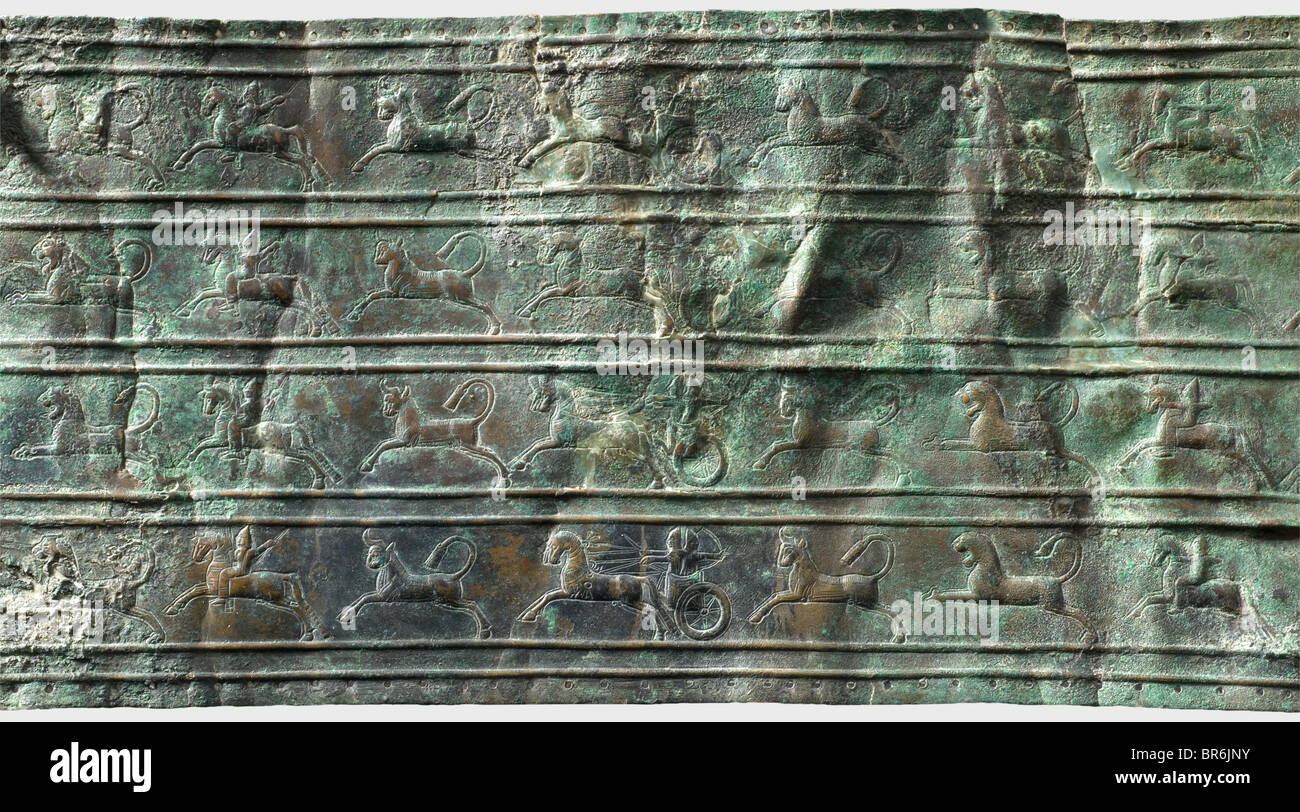 A fragment of an Urartian bronze belt, 8th century B.C. A broad bronze belt with four horizontal decorative rows with depictions of mounted bowmen, manned war chariots and archers hunting bulls and lions. The four rows separated by raised double lines between them. Finely drilled holes along the rim. On the preserved end of the belt a riveted loop for the ring taking the leather lacing. Length circa 76 cm, width circa 15.5 cm. Bronze. Red-brown to green patina with remnants of corrosion, ancient deformations, traces of exposure to fire. Axel Guttmann Collection, Stock Photohttps://www.alamy.com/image-license-details/?v=1https://www.alamy.com/stock-photo-a-fragment-of-an-urartian-bronze-belt-8th-century-bc-a-broad-bronze-31493895.html
A fragment of an Urartian bronze belt, 8th century B.C. A broad bronze belt with four horizontal decorative rows with depictions of mounted bowmen, manned war chariots and archers hunting bulls and lions. The four rows separated by raised double lines between them. Finely drilled holes along the rim. On the preserved end of the belt a riveted loop for the ring taking the leather lacing. Length circa 76 cm, width circa 15.5 cm. Bronze. Red-brown to green patina with remnants of corrosion, ancient deformations, traces of exposure to fire. Axel Guttmann Collection, Stock Photohttps://www.alamy.com/image-license-details/?v=1https://www.alamy.com/stock-photo-a-fragment-of-an-urartian-bronze-belt-8th-century-bc-a-broad-bronze-31493895.htmlRMBR6JNY–A fragment of an Urartian bronze belt, 8th century B.C. A broad bronze belt with four horizontal decorative rows with depictions of mounted bowmen, manned war chariots and archers hunting bulls and lions. The four rows separated by raised double lines between them. Finely drilled holes along the rim. On the preserved end of the belt a riveted loop for the ring taking the leather lacing. Length circa 76 cm, width circa 15.5 cm. Bronze. Red-brown to green patina with remnants of corrosion, ancient deformations, traces of exposure to fire. Axel Guttmann Collection,
 View over the ruins of the old part of Van known also as Tusba or Van castle, in the province of Van, Turkey. Stock Photohttps://www.alamy.com/image-license-details/?v=1https://www.alamy.com/stock-image-view-over-the-ruins-of-the-old-part-of-van-known-also-as-tusba-or-162133998.html
View over the ruins of the old part of Van known also as Tusba or Van castle, in the province of Van, Turkey. Stock Photohttps://www.alamy.com/image-license-details/?v=1https://www.alamy.com/stock-image-view-over-the-ruins-of-the-old-part-of-van-known-also-as-tusba-or-162133998.htmlRFKBNRFX–View over the ruins of the old part of Van known also as Tusba or Van castle, in the province of Van, Turkey.
 Silver wine pourer from Alt?ntepe, an Urartian fortress dating from the 9th-7th century BCE Stock Photohttps://www.alamy.com/image-license-details/?v=1https://www.alamy.com/stock-photo-silver-wine-pourer-from-altntepe-an-urartian-fortress-dating-from-104151075.html
Silver wine pourer from Alt?ntepe, an Urartian fortress dating from the 9th-7th century BCE Stock Photohttps://www.alamy.com/image-license-details/?v=1https://www.alamy.com/stock-photo-silver-wine-pourer-from-altntepe-an-urartian-fortress-dating-from-104151075.htmlRMG1CDN7–Silver wine pourer from Alt?ntepe, an Urartian fortress dating from the 9th-7th century BCE
RMPAJNPD–Plaque fragment with chariot scenes inscribed with the Urartian royal name Argishti. Culture: Urartian. Dimensions: 2.72 x 6 in. (6.91 x 15.24 cm). Date: ca. 713-679 B.C.. This fragment is decorated with two identical royal or religious processions, a typical stylistic and iconographic representation. What the footmen carry remains unknown. The Urartian cuneiform inscription above the top panel reads: 'From the arsenal of Argishti.'. Museum: Metropolitan Museum of Art, New York, USA.
 Urartian Fresco05 Stock Photohttps://www.alamy.com/image-license-details/?v=1https://www.alamy.com/stock-photo-urartian-fresco05-132440522.html
Urartian Fresco05 Stock Photohttps://www.alamy.com/image-license-details/?v=1https://www.alamy.com/stock-photo-urartian-fresco05-132440522.htmlRMHKD56J–Urartian Fresco05
 622 Urartian Fresco05 Stock Photohttps://www.alamy.com/image-license-details/?v=1https://www.alamy.com/622-urartian-fresco05-image214255627.html
622 Urartian Fresco05 Stock Photohttps://www.alamy.com/image-license-details/?v=1https://www.alamy.com/622-urartian-fresco05-image214255627.htmlRMPCG56K–622 Urartian Fresco05
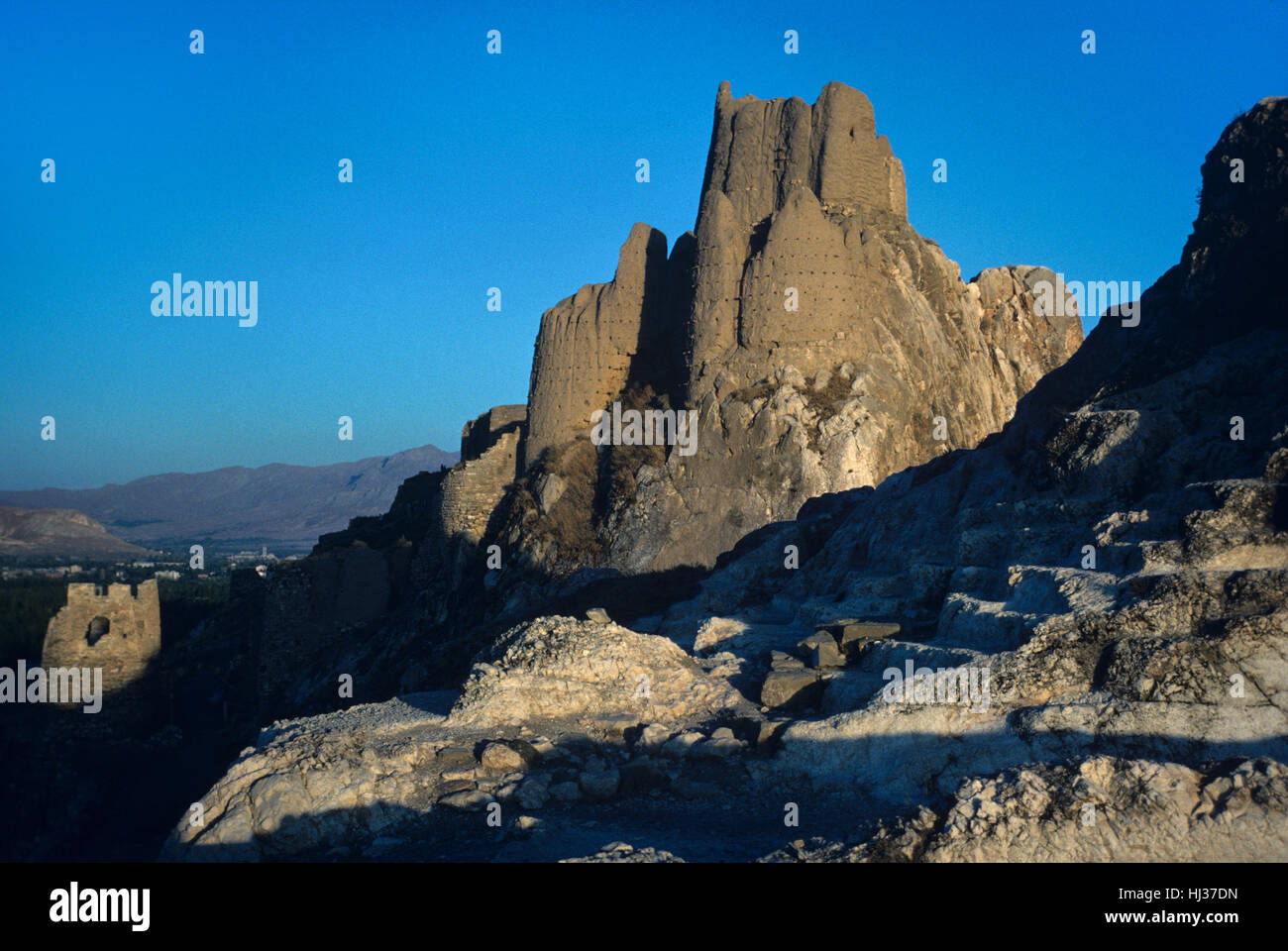 Van Castle or Fortress, ancient Tushba c8th-c9th BC, Van Turkey Stock Photohttps://www.alamy.com/image-license-details/?v=1https://www.alamy.com/stock-photo-van-castle-or-fortress-ancient-tushba-c8th-c9th-bc-van-turkey-131608113.html
Van Castle or Fortress, ancient Tushba c8th-c9th BC, Van Turkey Stock Photohttps://www.alamy.com/image-license-details/?v=1https://www.alamy.com/stock-photo-van-castle-or-fortress-ancient-tushba-c8th-c9th-bc-van-turkey-131608113.htmlRMHJ37DN–Van Castle or Fortress, ancient Tushba c8th-c9th BC, Van Turkey
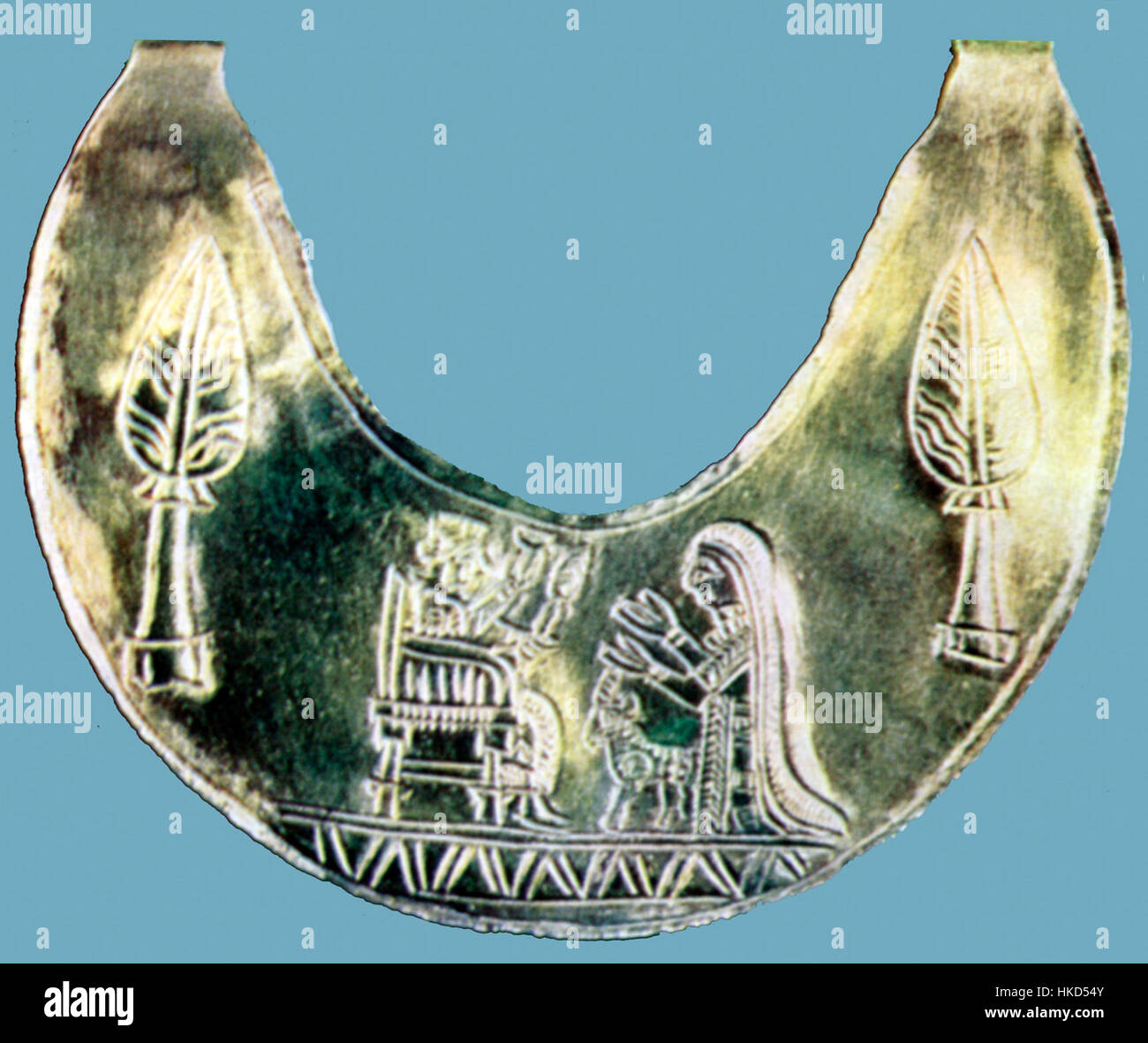 Urartian Carcanet Stock Photohttps://www.alamy.com/image-license-details/?v=1https://www.alamy.com/stock-photo-urartian-carcanet-132440475.html
Urartian Carcanet Stock Photohttps://www.alamy.com/image-license-details/?v=1https://www.alamy.com/stock-photo-urartian-carcanet-132440475.htmlRMHKD54Y–Urartian Carcanet
 Urartian Helmet S2B Stock Photohttps://www.alamy.com/image-license-details/?v=1https://www.alamy.com/stock-photo-urartian-helmet-s2b-171686223.html
Urartian Helmet S2B Stock Photohttps://www.alamy.com/image-license-details/?v=1https://www.alamy.com/stock-photo-urartian-helmet-s2b-171686223.htmlRMKY8YER–Urartian Helmet S2B
 Stamp seal (scaraboid) with monster, Urartian, Iron Age II, Date 9th - 7th century B.C., Syria or Anatolia, Urartian, Banded neutral Chalcedony (Quartz), Diameter: 1.6 - 1.62 cm, Height: 0.94 cm, Stone-Stamp Seals Stock Photohttps://www.alamy.com/image-license-details/?v=1https://www.alamy.com/stamp-seal-scaraboid-with-monster-urartian-iron-age-ii-date-9th-7th-century-bc-syria-or-anatolia-urartian-banded-neutral-chalcedony-quartz-diameter-16-162-cm-height-094-cm-stone-stamp-seals-image344674137.html
Stamp seal (scaraboid) with monster, Urartian, Iron Age II, Date 9th - 7th century B.C., Syria or Anatolia, Urartian, Banded neutral Chalcedony (Quartz), Diameter: 1.6 - 1.62 cm, Height: 0.94 cm, Stone-Stamp Seals Stock Photohttps://www.alamy.com/image-license-details/?v=1https://www.alamy.com/stamp-seal-scaraboid-with-monster-urartian-iron-age-ii-date-9th-7th-century-bc-syria-or-anatolia-urartian-banded-neutral-chalcedony-quartz-diameter-16-162-cm-height-094-cm-stone-stamp-seals-image344674137.htmlRM2B0N7AH–Stamp seal (scaraboid) with monster, Urartian, Iron Age II, Date 9th - 7th century B.C., Syria or Anatolia, Urartian, Banded neutral Chalcedony (Quartz), Diameter: 1.6 - 1.62 cm, Height: 0.94 cm, Stone-Stamp Seals
 Art inspired by Part of a throne with deity on a bull, Iron Age III, ca. late 8th–7th century B.C., Urartu, probably from Toprakkale, Urartian, Bronze, plastic restoration, H. 14.6 cm, Metalwork-Sculpture, Urartu was a powerful kingdom that rivaled the Assyrian Empire in the first, Classic works modernized by Artotop with a splash of modernity. Shapes, color and value, eye-catching visual impact on art. Emotions through freedom of artworks in a contemporary way. A timeless message pursuing a wildly creative new direction. Artists turning to the digital medium and creating the Artotop NFT Stock Photohttps://www.alamy.com/image-license-details/?v=1https://www.alamy.com/art-inspired-by-part-of-a-throne-with-deity-on-a-bull-iron-age-iii-ca-late-8th7th-century-bc-urartu-probably-from-toprakkale-urartian-bronze-plastic-restoration-h-146-cm-metalwork-sculpture-urartu-was-a-powerful-kingdom-that-rivaled-the-assyrian-empire-in-the-first-classic-works-modernized-by-artotop-with-a-splash-of-modernity-shapes-color-and-value-eye-catching-visual-impact-on-art-emotions-through-freedom-of-artworks-in-a-contemporary-way-a-timeless-message-pursuing-a-wildly-creative-new-direction-artists-turning-to-the-digital-medium-and-creating-the-artotop-nft-image462944641.html
Art inspired by Part of a throne with deity on a bull, Iron Age III, ca. late 8th–7th century B.C., Urartu, probably from Toprakkale, Urartian, Bronze, plastic restoration, H. 14.6 cm, Metalwork-Sculpture, Urartu was a powerful kingdom that rivaled the Assyrian Empire in the first, Classic works modernized by Artotop with a splash of modernity. Shapes, color and value, eye-catching visual impact on art. Emotions through freedom of artworks in a contemporary way. A timeless message pursuing a wildly creative new direction. Artists turning to the digital medium and creating the Artotop NFT Stock Photohttps://www.alamy.com/image-license-details/?v=1https://www.alamy.com/art-inspired-by-part-of-a-throne-with-deity-on-a-bull-iron-age-iii-ca-late-8th7th-century-bc-urartu-probably-from-toprakkale-urartian-bronze-plastic-restoration-h-146-cm-metalwork-sculpture-urartu-was-a-powerful-kingdom-that-rivaled-the-assyrian-empire-in-the-first-classic-works-modernized-by-artotop-with-a-splash-of-modernity-shapes-color-and-value-eye-catching-visual-impact-on-art-emotions-through-freedom-of-artworks-in-a-contemporary-way-a-timeless-message-pursuing-a-wildly-creative-new-direction-artists-turning-to-the-digital-medium-and-creating-the-artotop-nft-image462944641.htmlRF2HW4XH5–Art inspired by Part of a throne with deity on a bull, Iron Age III, ca. late 8th–7th century B.C., Urartu, probably from Toprakkale, Urartian, Bronze, plastic restoration, H. 14.6 cm, Metalwork-Sculpture, Urartu was a powerful kingdom that rivaled the Assyrian Empire in the first, Classic works modernized by Artotop with a splash of modernity. Shapes, color and value, eye-catching visual impact on art. Emotions through freedom of artworks in a contemporary way. A timeless message pursuing a wildly creative new direction. Artists turning to the digital medium and creating the Artotop NFT
 Turkish family getting photograph near the Ottoman walls on Van Kale, Turkey 100926 37281 Stock Photohttps://www.alamy.com/image-license-details/?v=1https://www.alamy.com/stock-photo-turkish-family-getting-photograph-near-the-ottoman-walls-on-van-kale-34024071.html
Turkish family getting photograph near the Ottoman walls on Van Kale, Turkey 100926 37281 Stock Photohttps://www.alamy.com/image-license-details/?v=1https://www.alamy.com/stock-photo-turkish-family-getting-photograph-near-the-ottoman-walls-on-van-kale-34024071.htmlRMBY9X1B–Turkish family getting photograph near the Ottoman walls on Van Kale, Turkey 100926 37281
 Art inspired by Plaque fragment with chariot scenes inscribed with the Urartian royal name Argishti, Iron Age III, ca. 713–679 B.C., Urartu, Urartian, Bronze, 2.72 x 6 in. (6.91 x 15.24 cm), Metalwork-Reliefs-Inscribed, This fragment is decorated with two identical royal or religious, Classic works modernized by Artotop with a splash of modernity. Shapes, color and value, eye-catching visual impact on art. Emotions through freedom of artworks in a contemporary way. A timeless message pursuing a wildly creative new direction. Artists turning to the digital medium and creating the Artotop NFT Stock Photohttps://www.alamy.com/image-license-details/?v=1https://www.alamy.com/art-inspired-by-plaque-fragment-with-chariot-scenes-inscribed-with-the-urartian-royal-name-argishti-iron-age-iii-ca-713679-bc-urartu-urartian-bronze-272-x-6-in-691-x-1524-cm-metalwork-reliefs-inscribed-this-fragment-is-decorated-with-two-identical-royal-or-religious-classic-works-modernized-by-artotop-with-a-splash-of-modernity-shapes-color-and-value-eye-catching-visual-impact-on-art-emotions-through-freedom-of-artworks-in-a-contemporary-way-a-timeless-message-pursuing-a-wildly-creative-new-direction-artists-turning-to-the-digital-medium-and-creating-the-artotop-nft-image462945039.html
Art inspired by Plaque fragment with chariot scenes inscribed with the Urartian royal name Argishti, Iron Age III, ca. 713–679 B.C., Urartu, Urartian, Bronze, 2.72 x 6 in. (6.91 x 15.24 cm), Metalwork-Reliefs-Inscribed, This fragment is decorated with two identical royal or religious, Classic works modernized by Artotop with a splash of modernity. Shapes, color and value, eye-catching visual impact on art. Emotions through freedom of artworks in a contemporary way. A timeless message pursuing a wildly creative new direction. Artists turning to the digital medium and creating the Artotop NFT Stock Photohttps://www.alamy.com/image-license-details/?v=1https://www.alamy.com/art-inspired-by-plaque-fragment-with-chariot-scenes-inscribed-with-the-urartian-royal-name-argishti-iron-age-iii-ca-713679-bc-urartu-urartian-bronze-272-x-6-in-691-x-1524-cm-metalwork-reliefs-inscribed-this-fragment-is-decorated-with-two-identical-royal-or-religious-classic-works-modernized-by-artotop-with-a-splash-of-modernity-shapes-color-and-value-eye-catching-visual-impact-on-art-emotions-through-freedom-of-artworks-in-a-contemporary-way-a-timeless-message-pursuing-a-wildly-creative-new-direction-artists-turning-to-the-digital-medium-and-creating-the-artotop-nft-image462945039.htmlRF2HW4Y3B–Art inspired by Plaque fragment with chariot scenes inscribed with the Urartian royal name Argishti, Iron Age III, ca. 713–679 B.C., Urartu, Urartian, Bronze, 2.72 x 6 in. (6.91 x 15.24 cm), Metalwork-Reliefs-Inscribed, This fragment is decorated with two identical royal or religious, Classic works modernized by Artotop with a splash of modernity. Shapes, color and value, eye-catching visual impact on art. Emotions through freedom of artworks in a contemporary way. A timeless message pursuing a wildly creative new direction. Artists turning to the digital medium and creating the Artotop NFT
 Ruins of the Urartian citadel of Cavustepe, Van, Turkey Stock Photohttps://www.alamy.com/image-license-details/?v=1https://www.alamy.com/ruins-of-the-urartian-citadel-of-cavustepe-van-turkey-image605214781.html
Ruins of the Urartian citadel of Cavustepe, Van, Turkey Stock Photohttps://www.alamy.com/image-license-details/?v=1https://www.alamy.com/ruins-of-the-urartian-citadel-of-cavustepe-van-turkey-image605214781.htmlRF2X4HWHH–Ruins of the Urartian citadel of Cavustepe, Van, Turkey
 Ruins of the Urartian citadel of Cavustepe, Van, Turkey Stock Photohttps://www.alamy.com/image-license-details/?v=1https://www.alamy.com/ruins-of-the-urartian-citadel-of-cavustepe-van-turkey-image605002883.html
Ruins of the Urartian citadel of Cavustepe, Van, Turkey Stock Photohttps://www.alamy.com/image-license-details/?v=1https://www.alamy.com/ruins-of-the-urartian-citadel-of-cavustepe-van-turkey-image605002883.htmlRF2X4879R–Ruins of the Urartian citadel of Cavustepe, Van, Turkey
 Urartian Armor 1 Stock Photohttps://www.alamy.com/image-license-details/?v=1https://www.alamy.com/stock-photo-urartian-armor-1-171685911.html
Urartian Armor 1 Stock Photohttps://www.alamy.com/image-license-details/?v=1https://www.alamy.com/stock-photo-urartian-armor-1-171685911.htmlRMKY8Y3K–Urartian Armor 1
 Van Kalesi (Van Castle), a Urartian citadel fortress from 8th century BC Stock Photohttps://www.alamy.com/image-license-details/?v=1https://www.alamy.com/stock-photo-van-kalesi-van-castle-a-urartian-citadel-fortress-from-8th-century-21252507.html
Van Kalesi (Van Castle), a Urartian citadel fortress from 8th century BC Stock Photohttps://www.alamy.com/image-license-details/?v=1https://www.alamy.com/stock-photo-van-kalesi-van-castle-a-urartian-citadel-fortress-from-8th-century-21252507.htmlRMB6G3P3–Van Kalesi (Van Castle), a Urartian citadel fortress from 8th century BC
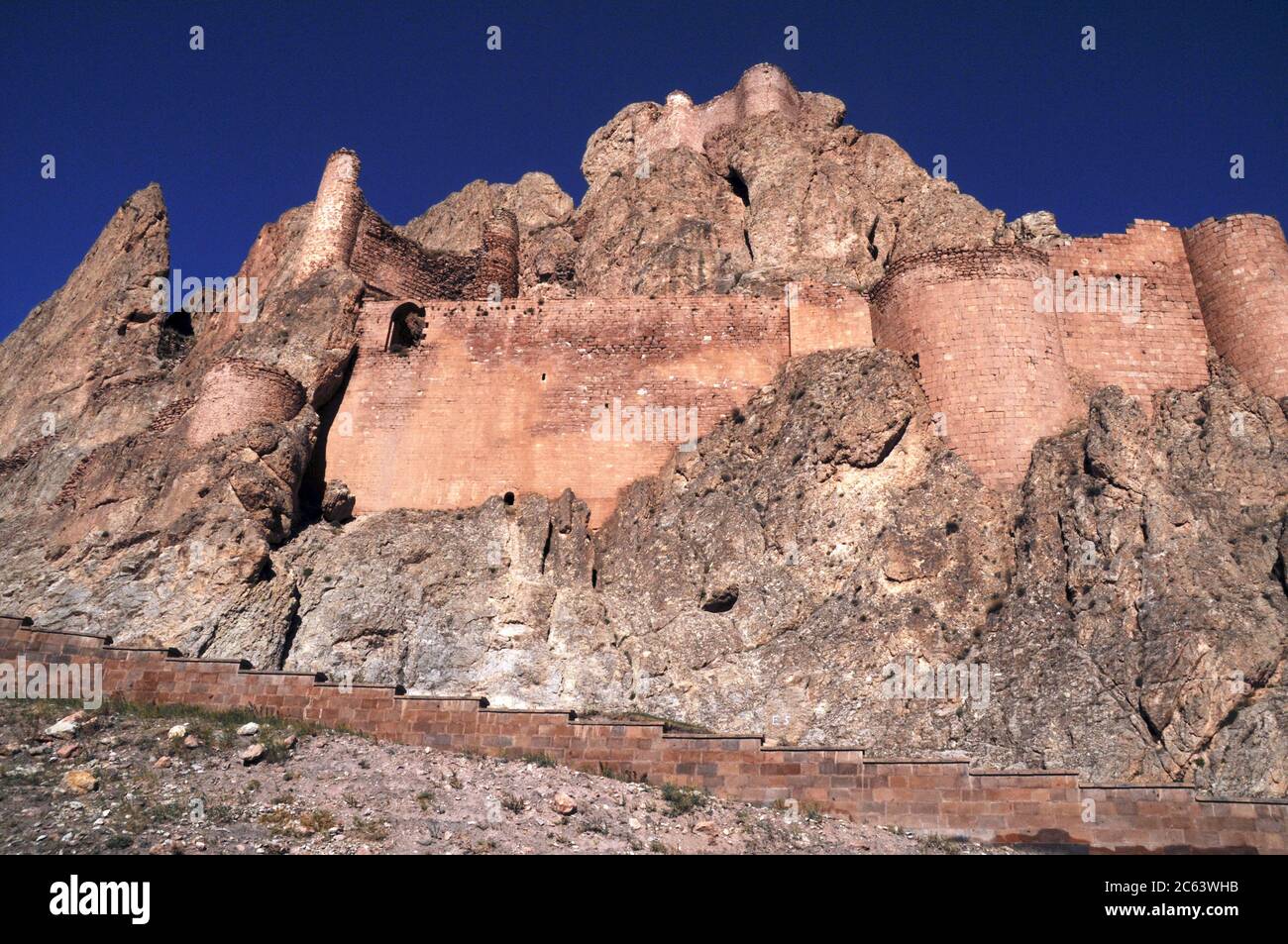 The ancient Urartian fortress built into a mountain near the Turkish border with Iran, Dogubeyazit, eastern Anatolia, Turkey. Stock Photohttps://www.alamy.com/image-license-details/?v=1https://www.alamy.com/the-ancient-urartian-fortress-built-into-a-mountain-near-the-turkish-border-with-iran-dogubeyazit-eastern-anatolia-turkey-image365191607.html
The ancient Urartian fortress built into a mountain near the Turkish border with Iran, Dogubeyazit, eastern Anatolia, Turkey. Stock Photohttps://www.alamy.com/image-license-details/?v=1https://www.alamy.com/the-ancient-urartian-fortress-built-into-a-mountain-near-the-turkish-border-with-iran-dogubeyazit-eastern-anatolia-turkey-image365191607.htmlRF2C63WHB–The ancient Urartian fortress built into a mountain near the Turkish border with Iran, Dogubeyazit, eastern Anatolia, Turkey.
 Urartian Comb Stock Photohttps://www.alamy.com/image-license-details/?v=1https://www.alamy.com/stock-photo-urartian-comb-147692961.html
Urartian Comb Stock Photohttps://www.alamy.com/image-license-details/?v=1https://www.alamy.com/stock-photo-urartian-comb-147692961.htmlRMJG7YTH–Urartian Comb
 A fragment of an Urartian bronze belt, 8th century B.C. A broad bronze belt with four horizontal decorative rows with depictions of mounted bowmen, manned war chariots and archers hunting bulls and lions. The four rows separated by raised double lines between them. Finely drilled holes along the rim. On the preserved end of the belt a riveted loop for the ring taking the leather lacing. Length circa 76 cm, width circa 15.5 cm. Bronze. Red-brown to green patina with remnants of corrosion, ancient deformations, traces of exposure to fire. Axel Guttmann Collection, Stock Photohttps://www.alamy.com/image-license-details/?v=1https://www.alamy.com/stock-photo-a-fragment-of-an-urartian-bronze-belt-8th-century-bc-a-broad-bronze-31493819.html
A fragment of an Urartian bronze belt, 8th century B.C. A broad bronze belt with four horizontal decorative rows with depictions of mounted bowmen, manned war chariots and archers hunting bulls and lions. The four rows separated by raised double lines between them. Finely drilled holes along the rim. On the preserved end of the belt a riveted loop for the ring taking the leather lacing. Length circa 76 cm, width circa 15.5 cm. Bronze. Red-brown to green patina with remnants of corrosion, ancient deformations, traces of exposure to fire. Axel Guttmann Collection, Stock Photohttps://www.alamy.com/image-license-details/?v=1https://www.alamy.com/stock-photo-a-fragment-of-an-urartian-bronze-belt-8th-century-bc-a-broad-bronze-31493819.htmlRMBR6JK7–A fragment of an Urartian bronze belt, 8th century B.C. A broad bronze belt with four horizontal decorative rows with depictions of mounted bowmen, manned war chariots and archers hunting bulls and lions. The four rows separated by raised double lines between them. Finely drilled holes along the rim. On the preserved end of the belt a riveted loop for the ring taking the leather lacing. Length circa 76 cm, width circa 15.5 cm. Bronze. Red-brown to green patina with remnants of corrosion, ancient deformations, traces of exposure to fire. Axel Guttmann Collection,
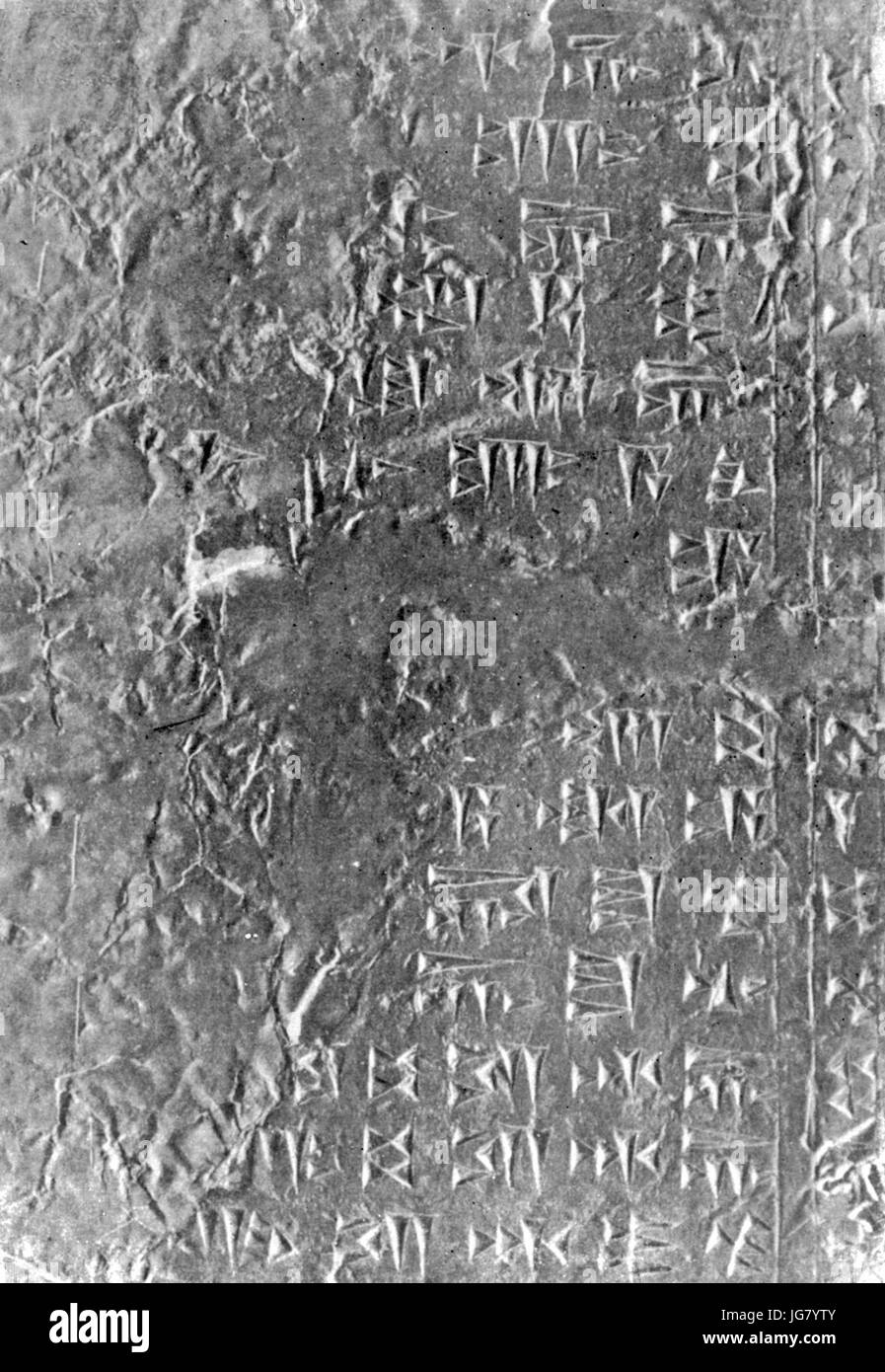 Urartian Tablet04 Stock Photohttps://www.alamy.com/image-license-details/?v=1https://www.alamy.com/stock-photo-urartian-tablet04-147692971.html
Urartian Tablet04 Stock Photohttps://www.alamy.com/image-license-details/?v=1https://www.alamy.com/stock-photo-urartian-tablet04-147692971.htmlRMJG7YTY–Urartian Tablet04
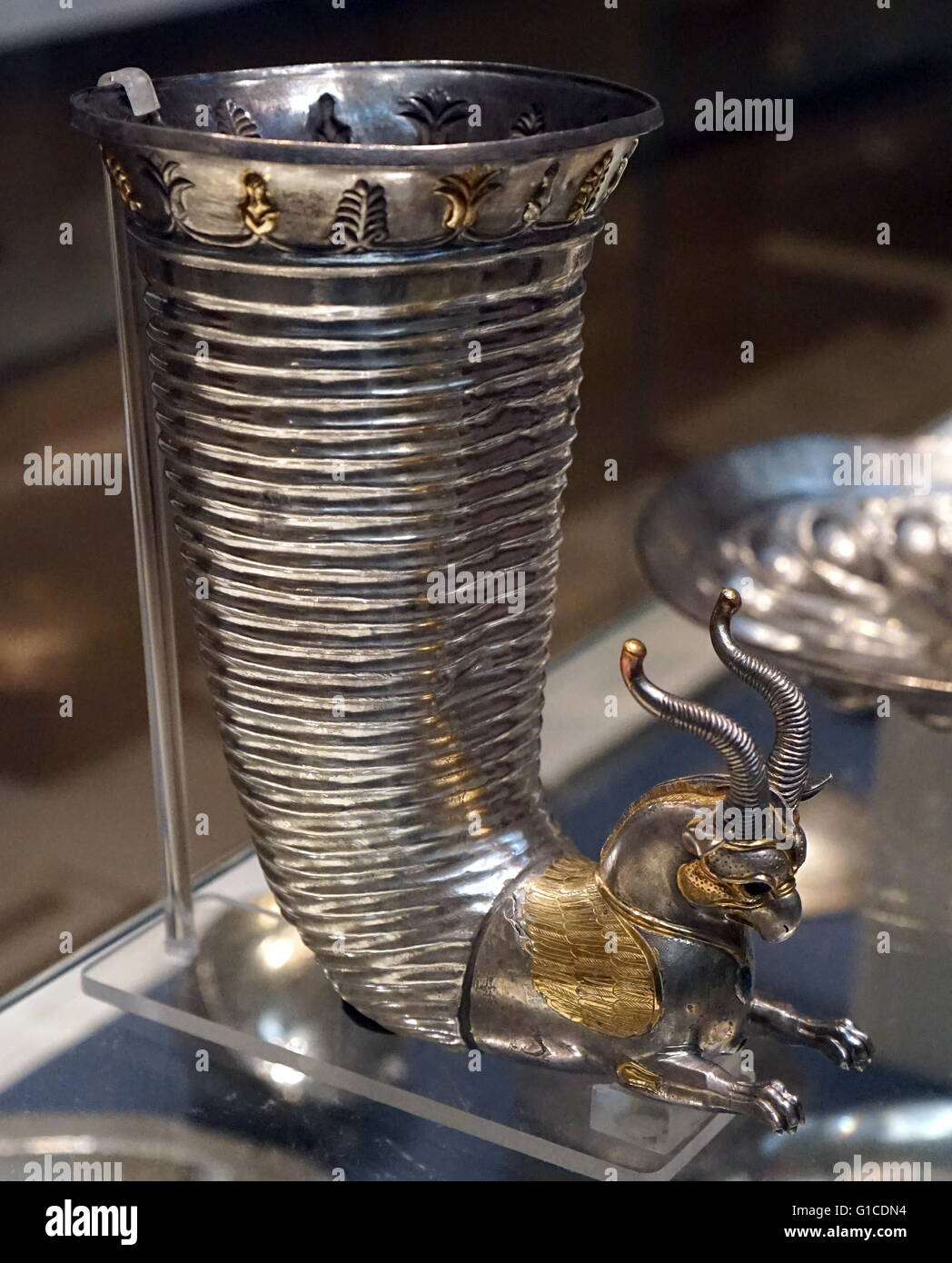 Silver wine pourer from Alt?ntepe, an Urartian fortress dating from the 9th-7th century BCE Stock Photohttps://www.alamy.com/image-license-details/?v=1https://www.alamy.com/stock-photo-silver-wine-pourer-from-altntepe-an-urartian-fortress-dating-from-104151072.html
Silver wine pourer from Alt?ntepe, an Urartian fortress dating from the 9th-7th century BCE Stock Photohttps://www.alamy.com/image-license-details/?v=1https://www.alamy.com/stock-photo-silver-wine-pourer-from-altntepe-an-urartian-fortress-dating-from-104151072.htmlRMG1CDN4–Silver wine pourer from Alt?ntepe, an Urartian fortress dating from the 9th-7th century BCE
RMPAM4F8–Medallion with a seated deity and a male worshiper. Culture: Urartian. Dimensions: Diam. 2 3/8 in. (6 cm). Date: ca. 8th-7th century B.C.. The kings of Urartu ruled what is now eastern Turkey, Armenia, and northwestern Iran from their capital at Tushpa (modern Van, Turkey) during the early first millennium B.C. Urartian fortresses, strategically placed on high rock outcrops, dominated the landscape of their territories and protected the kingdom from their rivals, the Assyrians. Despite confrontations with the Assyrians, the Urartians also borrowed many images and iconographic elements from As
 Urartian Seal05 Stock Photohttps://www.alamy.com/image-license-details/?v=1https://www.alamy.com/stock-photo-urartian-seal05-147692963.html
Urartian Seal05 Stock Photohttps://www.alamy.com/image-license-details/?v=1https://www.alamy.com/stock-photo-urartian-seal05-147692963.htmlRMJG7YTK–Urartian Seal05
 622 Urartian Fresco05 Stock Photohttps://www.alamy.com/image-license-details/?v=1https://www.alamy.com/622-urartian-fresco05-image188257133.html
622 Urartian Fresco05 Stock Photohttps://www.alamy.com/image-license-details/?v=1https://www.alamy.com/622-urartian-fresco05-image188257133.htmlRMMX7RW1–622 Urartian Fresco05
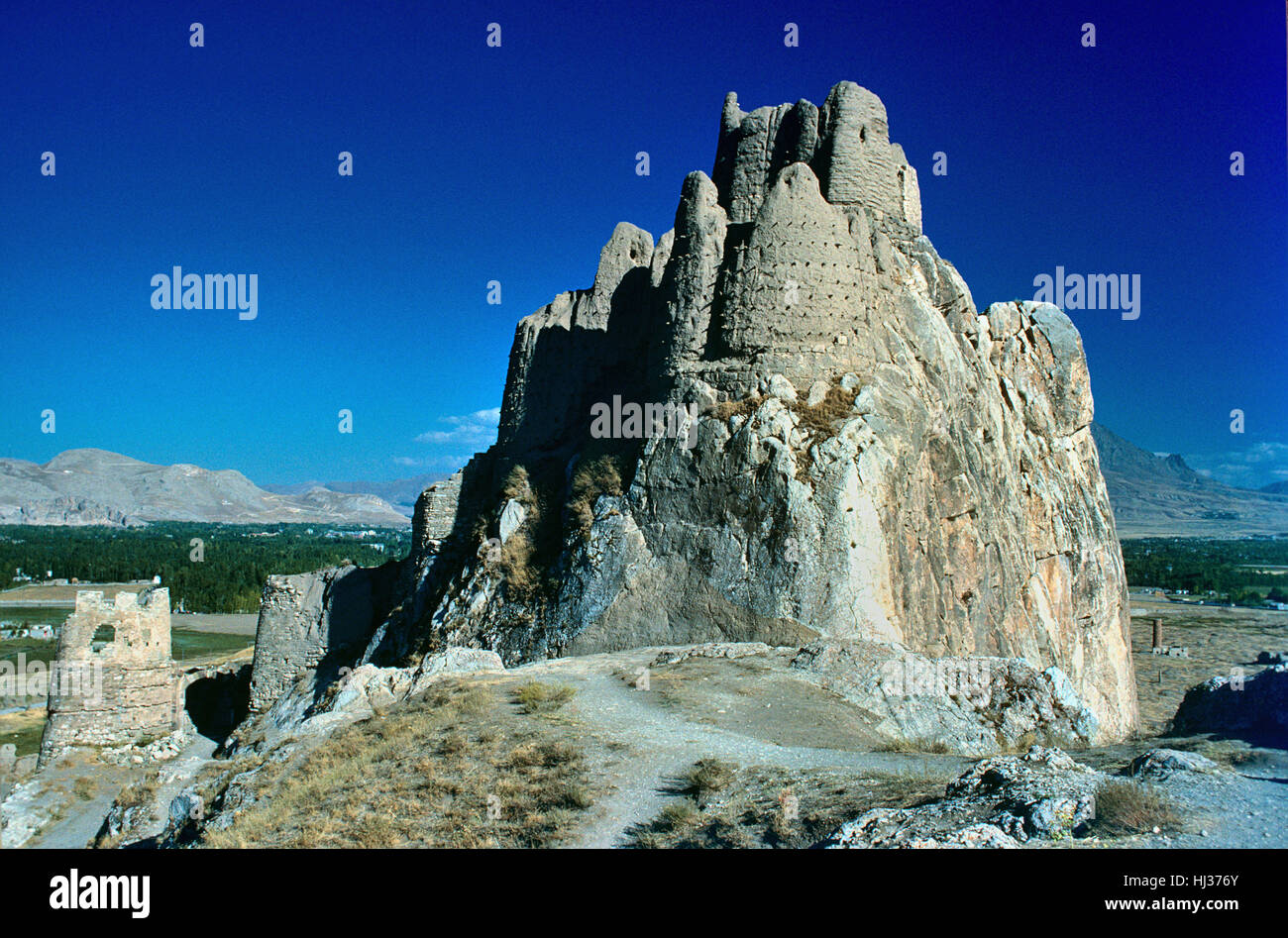 Van Castle or Fortress, ancient Tushba c8th-c9th BC, Van Turkey Stock Photohttps://www.alamy.com/image-license-details/?v=1https://www.alamy.com/stock-photo-van-castle-or-fortress-ancient-tushba-c8th-c9th-bc-van-turkey-131607923.html
Van Castle or Fortress, ancient Tushba c8th-c9th BC, Van Turkey Stock Photohttps://www.alamy.com/image-license-details/?v=1https://www.alamy.com/stock-photo-van-castle-or-fortress-ancient-tushba-c8th-c9th-bc-van-turkey-131607923.htmlRMHJ376Y–Van Castle or Fortress, ancient Tushba c8th-c9th BC, Van Turkey
 Urartian Fresco04 Stock Photohttps://www.alamy.com/image-license-details/?v=1https://www.alamy.com/stock-photo-urartian-fresco04-132440485.html
Urartian Fresco04 Stock Photohttps://www.alamy.com/image-license-details/?v=1https://www.alamy.com/stock-photo-urartian-fresco04-132440485.htmlRMHKD559–Urartian Fresco04
 Inscription to Xerxes the Great in Urartian cuneiform c 600 BC, Van Kalesi, Fortress of Van, Turkey photo taken in 1970 Stock Photohttps://www.alamy.com/image-license-details/?v=1https://www.alamy.com/inscription-to-xerxes-the-great-in-urartian-cuneiform-c-600-bc-van-kalesi-fortress-of-van-turkey-photo-taken-in-1970-image454263598.html
Inscription to Xerxes the Great in Urartian cuneiform c 600 BC, Van Kalesi, Fortress of Van, Turkey photo taken in 1970 Stock Photohttps://www.alamy.com/image-license-details/?v=1https://www.alamy.com/inscription-to-xerxes-the-great-in-urartian-cuneiform-c-600-bc-van-kalesi-fortress-of-van-turkey-photo-taken-in-1970-image454263598.htmlRM2HB1DRX–Inscription to Xerxes the Great in Urartian cuneiform c 600 BC, Van Kalesi, Fortress of Van, Turkey photo taken in 1970
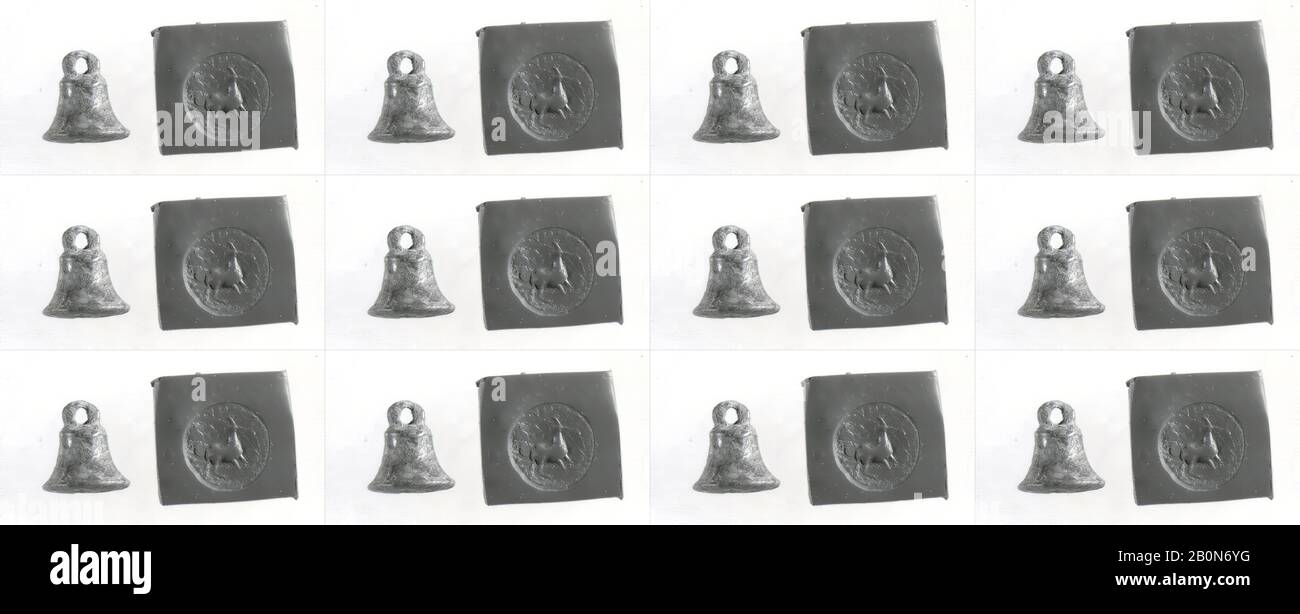 Stamp seal (bell-shaped with loop handle) with animal, Urartian, Iron Age II, Date ca. 8th–7th century B.C., Urartu, Urartian, Copper/bronze alloy, Diameter: 1.37 cm, Height: 1.44 cm, Metalwork-Stamp Seals Stock Photohttps://www.alamy.com/image-license-details/?v=1https://www.alamy.com/stamp-seal-bell-shaped-with-loop-handle-with-animal-urartian-iron-age-ii-date-ca-8th7th-century-bc-urartu-urartian-copperbronze-alloy-diameter-137-cm-height-144-cm-metalwork-stamp-seals-image344673828.html
Stamp seal (bell-shaped with loop handle) with animal, Urartian, Iron Age II, Date ca. 8th–7th century B.C., Urartu, Urartian, Copper/bronze alloy, Diameter: 1.37 cm, Height: 1.44 cm, Metalwork-Stamp Seals Stock Photohttps://www.alamy.com/image-license-details/?v=1https://www.alamy.com/stamp-seal-bell-shaped-with-loop-handle-with-animal-urartian-iron-age-ii-date-ca-8th7th-century-bc-urartu-urartian-copperbronze-alloy-diameter-137-cm-height-144-cm-metalwork-stamp-seals-image344673828.htmlRM2B0N6YG–Stamp seal (bell-shaped with loop handle) with animal, Urartian, Iron Age II, Date ca. 8th–7th century B.C., Urartu, Urartian, Copper/bronze alloy, Diameter: 1.37 cm, Height: 1.44 cm, Metalwork-Stamp Seals
 Urartian Fresco02 Stock Photohttps://www.alamy.com/image-license-details/?v=1https://www.alamy.com/stock-photo-urartian-fresco02-132440307.html
Urartian Fresco02 Stock Photohttps://www.alamy.com/image-license-details/?v=1https://www.alamy.com/stock-photo-urartian-fresco02-132440307.htmlRMHKD4XY–Urartian Fresco02
 Park below Van Kale, Turkey 100926 37267 Stock Photohttps://www.alamy.com/image-license-details/?v=1https://www.alamy.com/stock-photo-park-below-van-kale-turkey-100926-37267-34024054.html
Park below Van Kale, Turkey 100926 37267 Stock Photohttps://www.alamy.com/image-license-details/?v=1https://www.alamy.com/stock-photo-park-below-van-kale-turkey-100926-37267-34024054.htmlRMBY9X0P–Park below Van Kale, Turkey 100926 37267
 Art inspired by Medallion with a seated deity and a male worshiper, Iron Age III, ca. 8th–7th century B.C., Urartu, Urartian, Silver, gold foil, Diam. 2 3/8 in. (6 cm), Metalwork-Ornaments, The kings of Urartu ruled what is now eastern Turkey, Armenia, and northwestern Iran from their, Classic works modernized by Artotop with a splash of modernity. Shapes, color and value, eye-catching visual impact on art. Emotions through freedom of artworks in a contemporary way. A timeless message pursuing a wildly creative new direction. Artists turning to the digital medium and creating the Artotop NFT Stock Photohttps://www.alamy.com/image-license-details/?v=1https://www.alamy.com/art-inspired-by-medallion-with-a-seated-deity-and-a-male-worshiper-iron-age-iii-ca-8th7th-century-bc-urartu-urartian-silver-gold-foil-diam-2-38-in-6-cm-metalwork-ornaments-the-kings-of-urartu-ruled-what-is-now-eastern-turkey-armenia-and-northwestern-iran-from-their-classic-works-modernized-by-artotop-with-a-splash-of-modernity-shapes-color-and-value-eye-catching-visual-impact-on-art-emotions-through-freedom-of-artworks-in-a-contemporary-way-a-timeless-message-pursuing-a-wildly-creative-new-direction-artists-turning-to-the-digital-medium-and-creating-the-artotop-nft-image462945100.html
Art inspired by Medallion with a seated deity and a male worshiper, Iron Age III, ca. 8th–7th century B.C., Urartu, Urartian, Silver, gold foil, Diam. 2 3/8 in. (6 cm), Metalwork-Ornaments, The kings of Urartu ruled what is now eastern Turkey, Armenia, and northwestern Iran from their, Classic works modernized by Artotop with a splash of modernity. Shapes, color and value, eye-catching visual impact on art. Emotions through freedom of artworks in a contemporary way. A timeless message pursuing a wildly creative new direction. Artists turning to the digital medium and creating the Artotop NFT Stock Photohttps://www.alamy.com/image-license-details/?v=1https://www.alamy.com/art-inspired-by-medallion-with-a-seated-deity-and-a-male-worshiper-iron-age-iii-ca-8th7th-century-bc-urartu-urartian-silver-gold-foil-diam-2-38-in-6-cm-metalwork-ornaments-the-kings-of-urartu-ruled-what-is-now-eastern-turkey-armenia-and-northwestern-iran-from-their-classic-works-modernized-by-artotop-with-a-splash-of-modernity-shapes-color-and-value-eye-catching-visual-impact-on-art-emotions-through-freedom-of-artworks-in-a-contemporary-way-a-timeless-message-pursuing-a-wildly-creative-new-direction-artists-turning-to-the-digital-medium-and-creating-the-artotop-nft-image462945100.htmlRF2HW4Y5G–Art inspired by Medallion with a seated deity and a male worshiper, Iron Age III, ca. 8th–7th century B.C., Urartu, Urartian, Silver, gold foil, Diam. 2 3/8 in. (6 cm), Metalwork-Ornaments, The kings of Urartu ruled what is now eastern Turkey, Armenia, and northwestern Iran from their, Classic works modernized by Artotop with a splash of modernity. Shapes, color and value, eye-catching visual impact on art. Emotions through freedom of artworks in a contemporary way. A timeless message pursuing a wildly creative new direction. Artists turning to the digital medium and creating the Artotop NFT
 Ruins of the Urartian citadel of Cavustepe, Van, Turkey Stock Photohttps://www.alamy.com/image-license-details/?v=1https://www.alamy.com/ruins-of-the-urartian-citadel-of-cavustepe-van-turkey-image605214812.html
Ruins of the Urartian citadel of Cavustepe, Van, Turkey Stock Photohttps://www.alamy.com/image-license-details/?v=1https://www.alamy.com/ruins-of-the-urartian-citadel-of-cavustepe-van-turkey-image605214812.htmlRF2X4HWJM–Ruins of the Urartian citadel of Cavustepe, Van, Turkey
 Ruins of the Urartian citadel of Cavustepe, Van, Turkey Stock Photohttps://www.alamy.com/image-license-details/?v=1https://www.alamy.com/ruins-of-the-urartian-citadel-of-cavustepe-van-turkey-image605002890.html
Ruins of the Urartian citadel of Cavustepe, Van, Turkey Stock Photohttps://www.alamy.com/image-license-details/?v=1https://www.alamy.com/ruins-of-the-urartian-citadel-of-cavustepe-van-turkey-image605002890.htmlRF2X487A2–Ruins of the Urartian citadel of Cavustepe, Van, Turkey
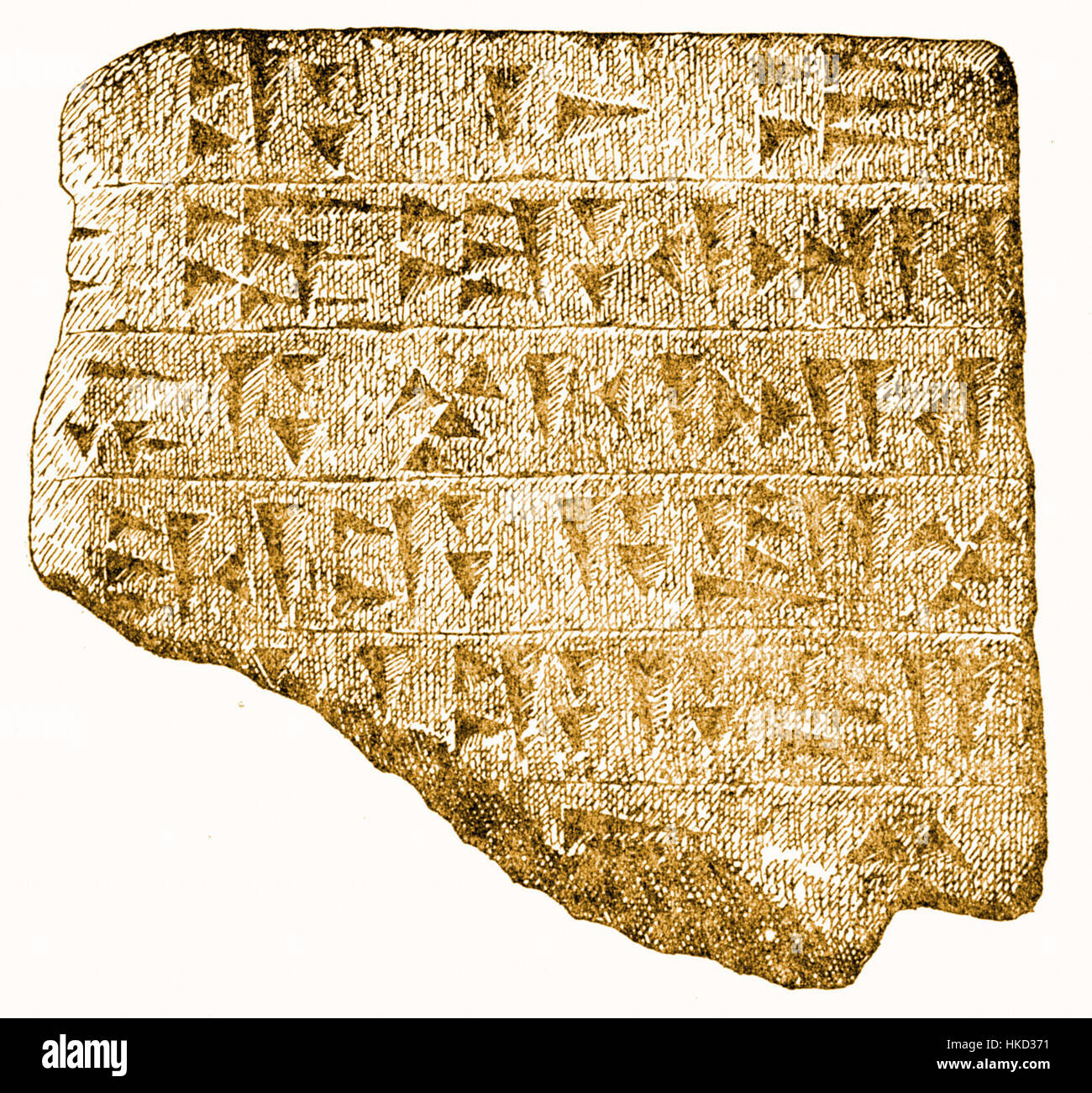 Urartian Tablet 12 Stock Photohttps://www.alamy.com/image-license-details/?v=1https://www.alamy.com/stock-photo-urartian-tablet-12-132438965.html
Urartian Tablet 12 Stock Photohttps://www.alamy.com/image-license-details/?v=1https://www.alamy.com/stock-photo-urartian-tablet-12-132438965.htmlRMHKD371–Urartian Tablet 12
 Van Kalesi (Van Castle), a Urartian citadel fortress from 8th century BC Stock Photohttps://www.alamy.com/image-license-details/?v=1https://www.alamy.com/stock-photo-van-kalesi-van-castle-a-urartian-citadel-fortress-from-8th-century-21258902.html
Van Kalesi (Van Castle), a Urartian citadel fortress from 8th century BC Stock Photohttps://www.alamy.com/image-license-details/?v=1https://www.alamy.com/stock-photo-van-kalesi-van-castle-a-urartian-citadel-fortress-from-8th-century-21258902.htmlRMB6GBXE–Van Kalesi (Van Castle), a Urartian citadel fortress from 8th century BC
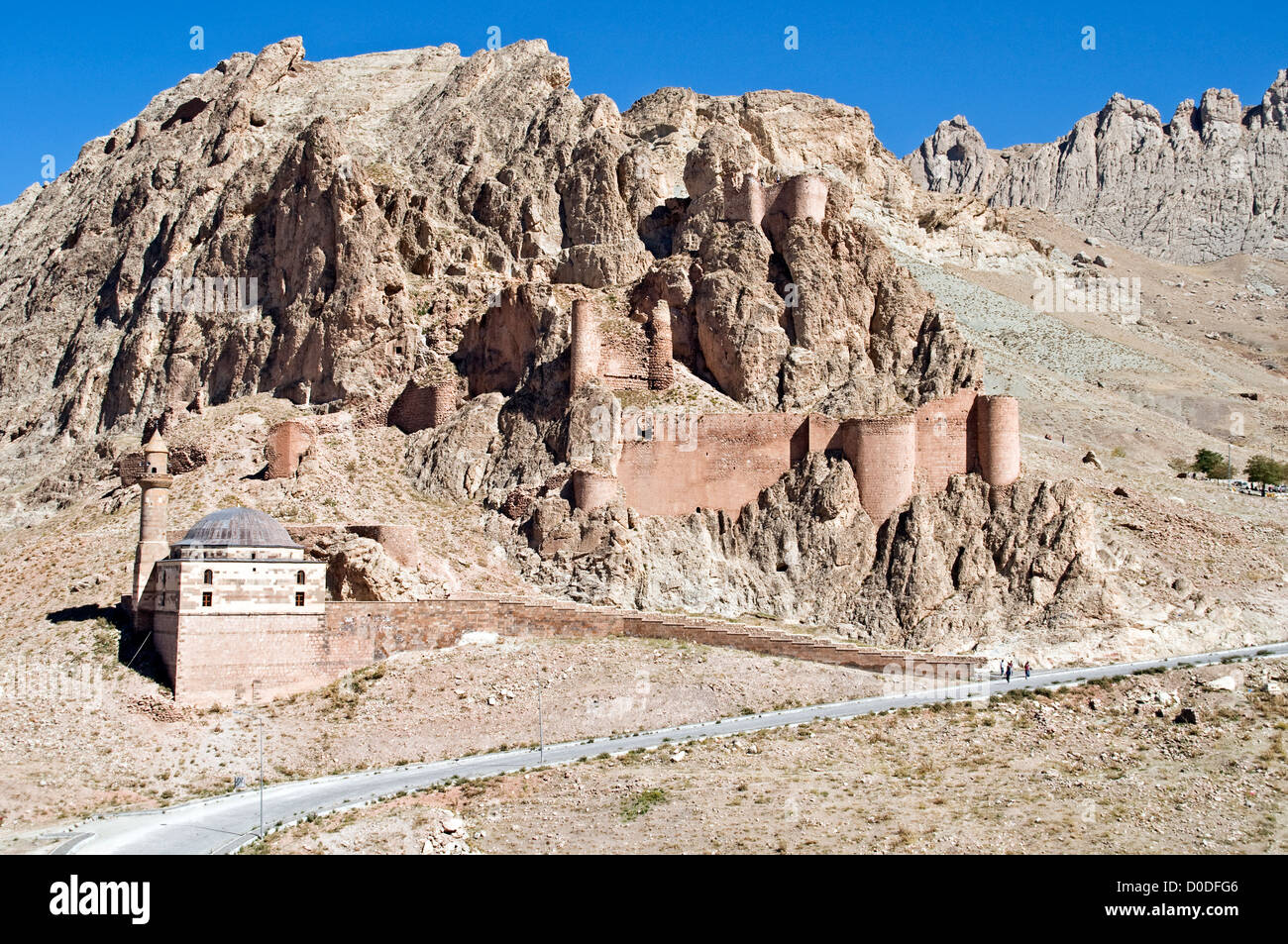 The ancient Urartian fortress and mosque of old Beyazit near the Turkish border with Iran, near Dogubeyazit, eastern Anatolia, Turkey. Stock Photohttps://www.alamy.com/image-license-details/?v=1https://www.alamy.com/stock-photo-the-ancient-urartian-fortress-and-mosque-of-old-beyazit-near-the-turkish-51928694.html
The ancient Urartian fortress and mosque of old Beyazit near the Turkish border with Iran, near Dogubeyazit, eastern Anatolia, Turkey. Stock Photohttps://www.alamy.com/image-license-details/?v=1https://www.alamy.com/stock-photo-the-ancient-urartian-fortress-and-mosque-of-old-beyazit-near-the-turkish-51928694.htmlRMD0DFG6–The ancient Urartian fortress and mosque of old Beyazit near the Turkish border with Iran, near Dogubeyazit, eastern Anatolia, Turkey.
